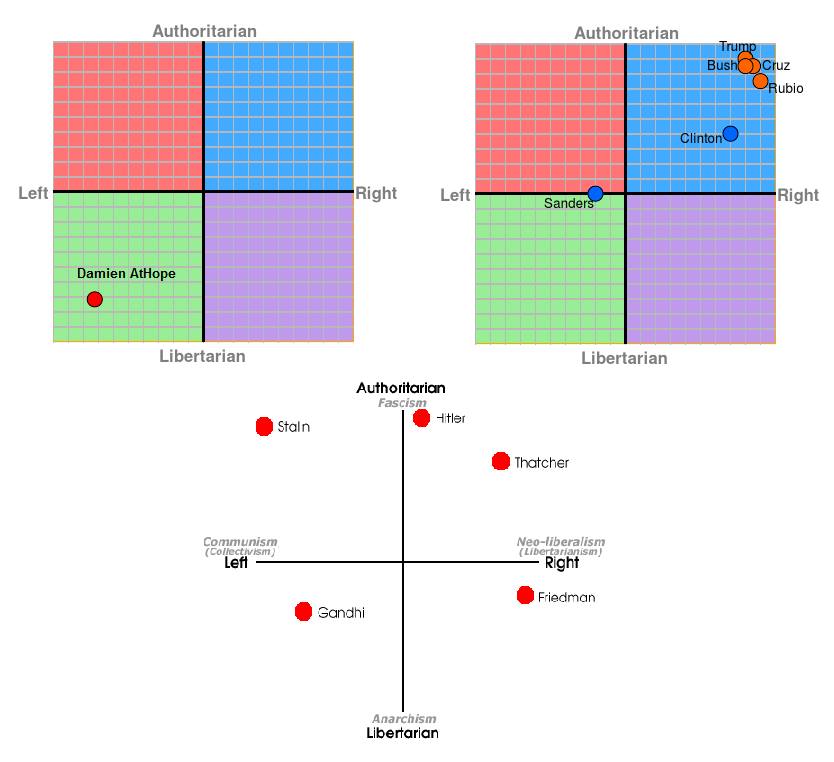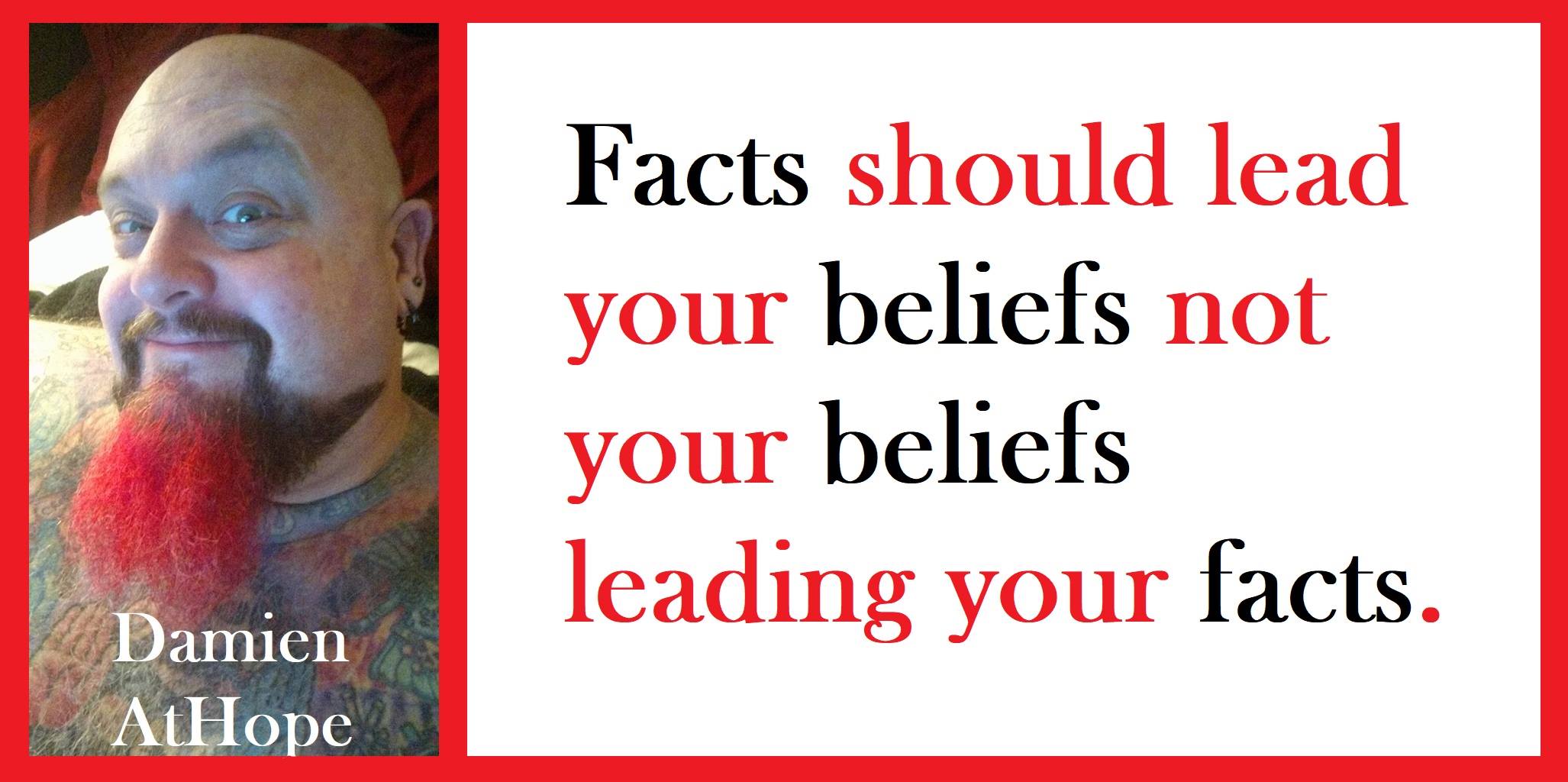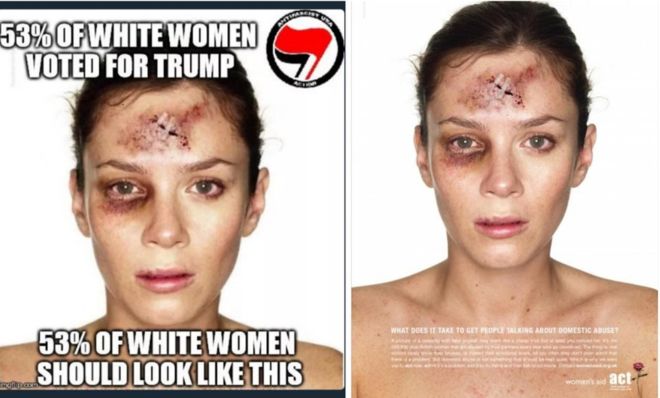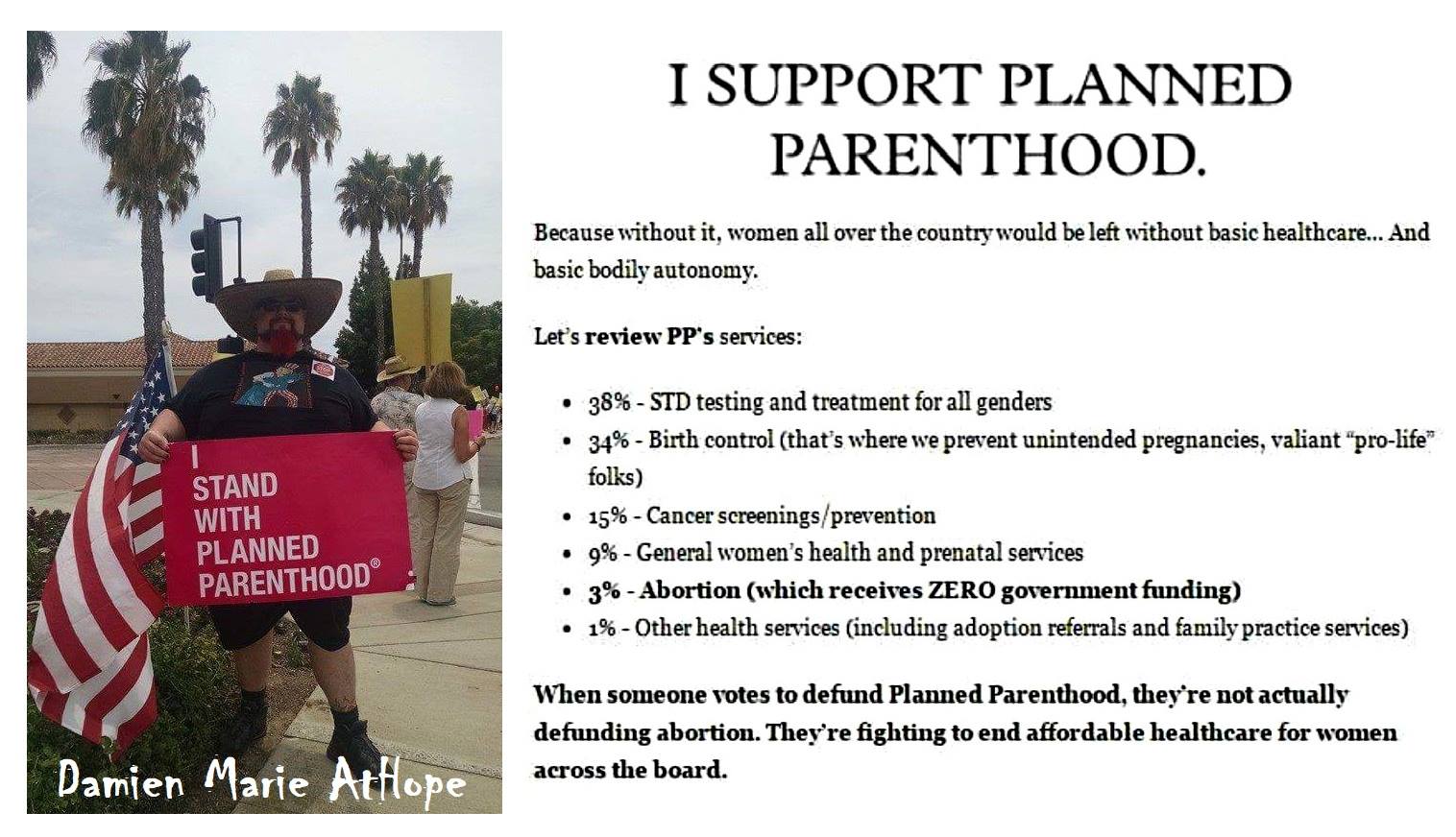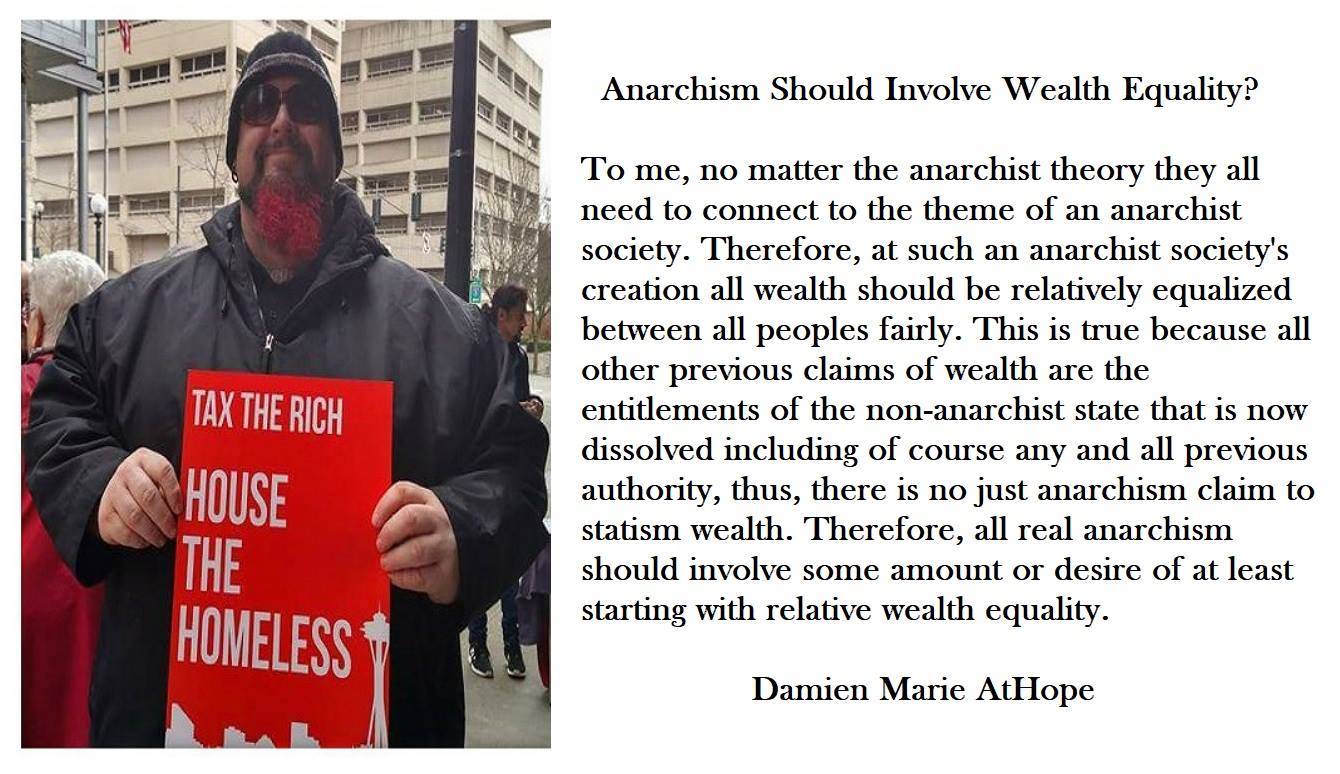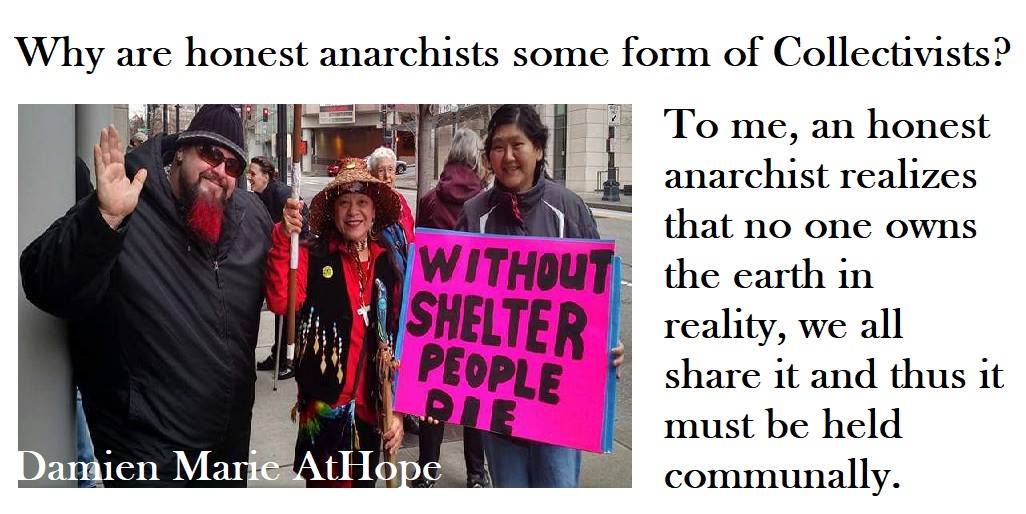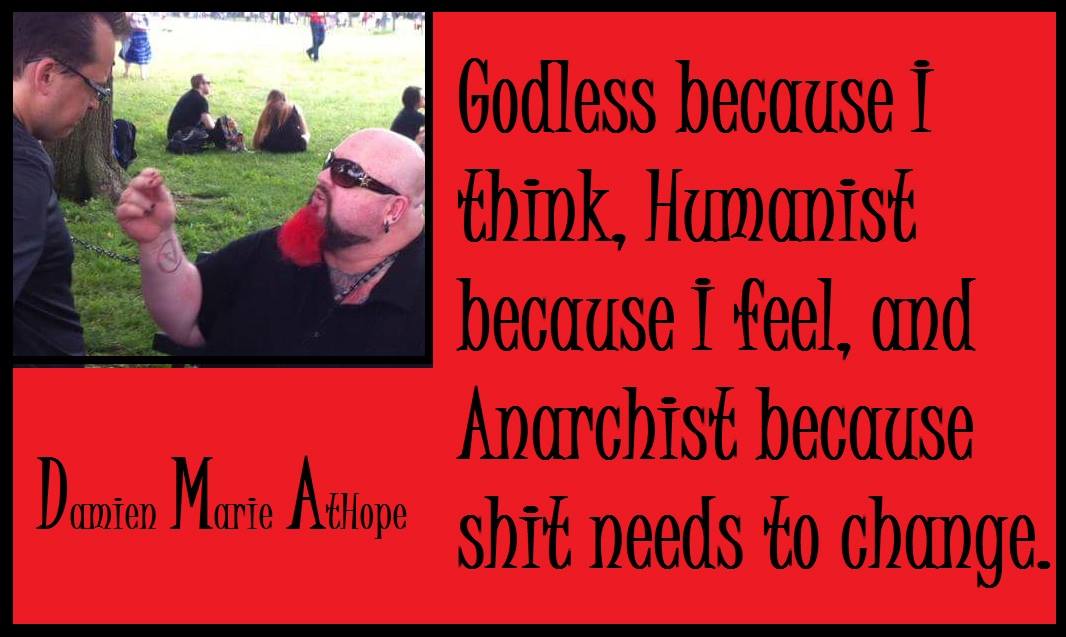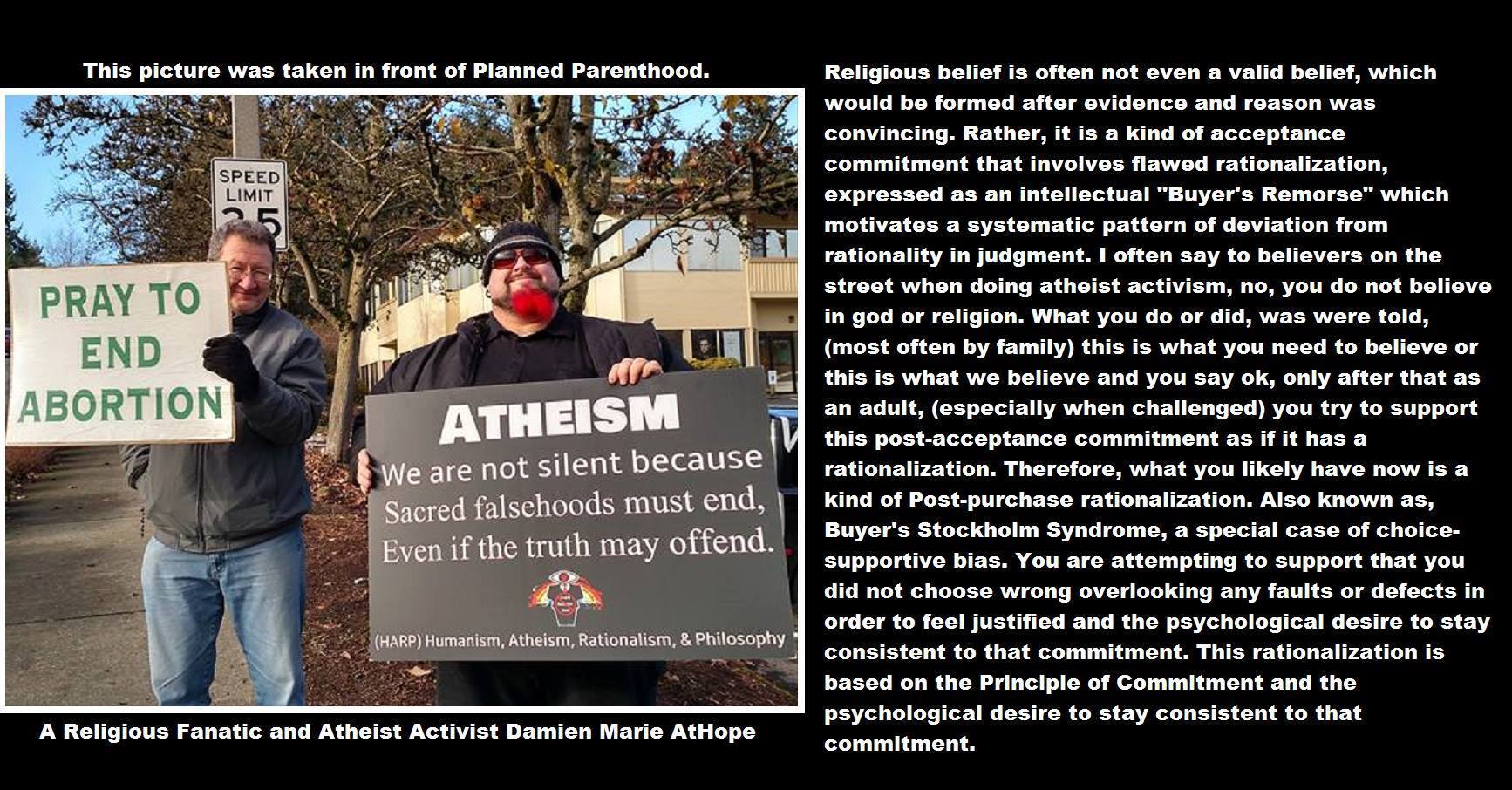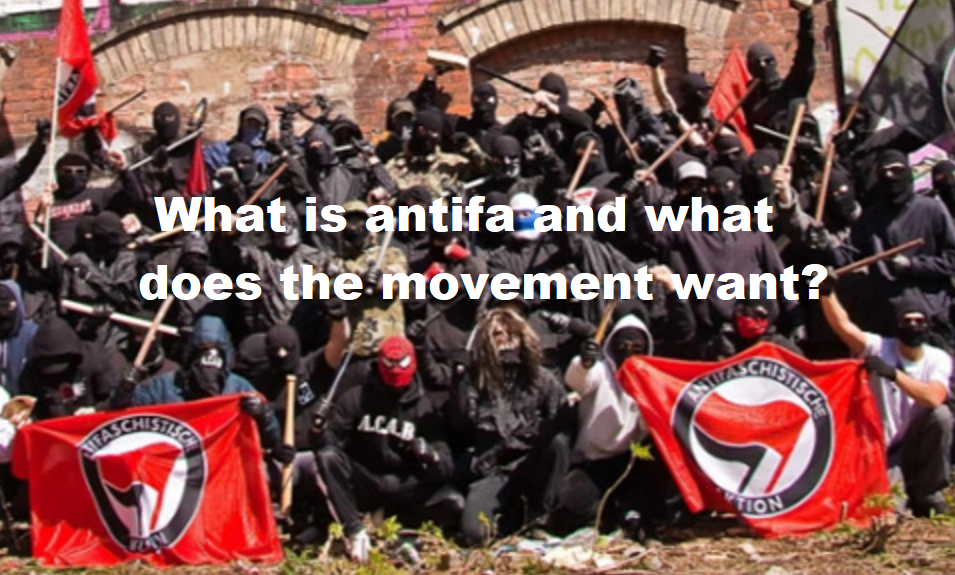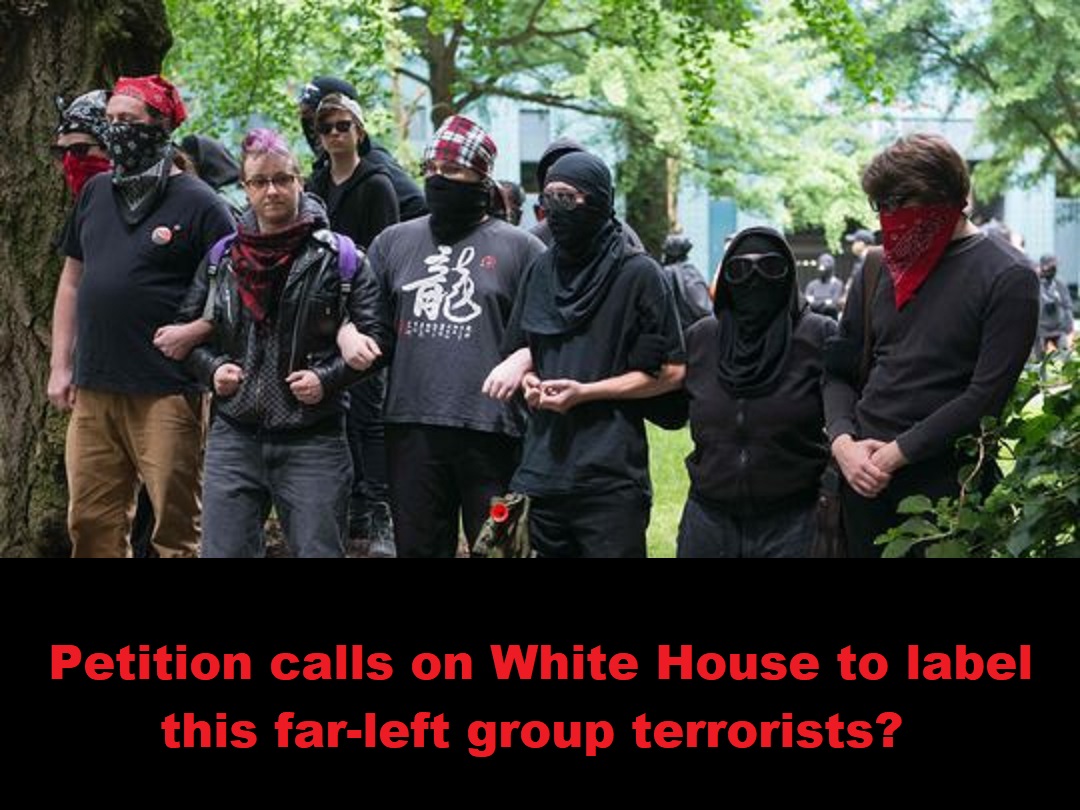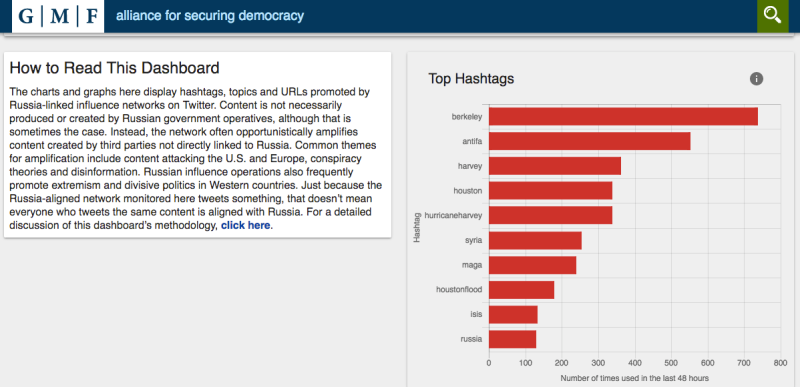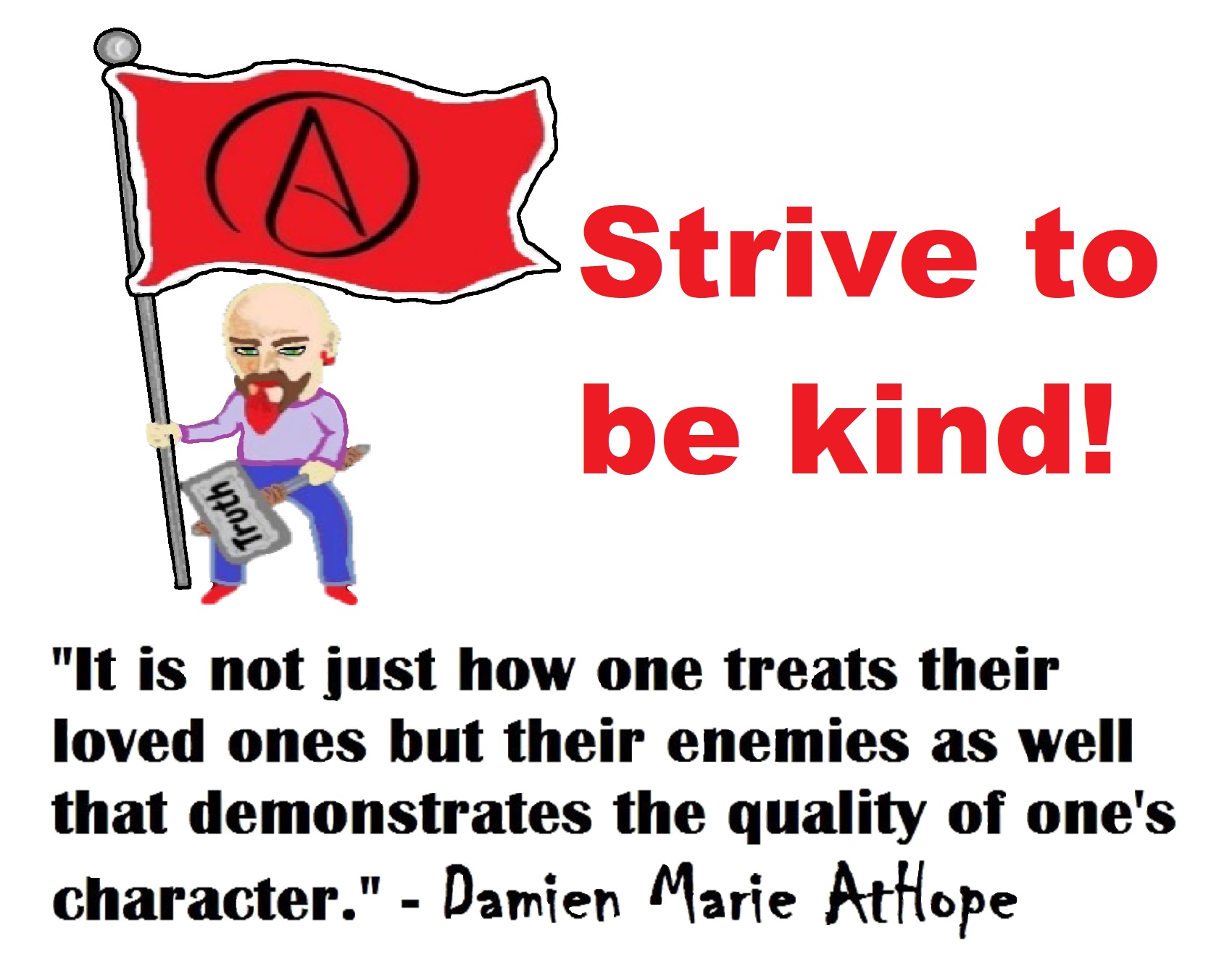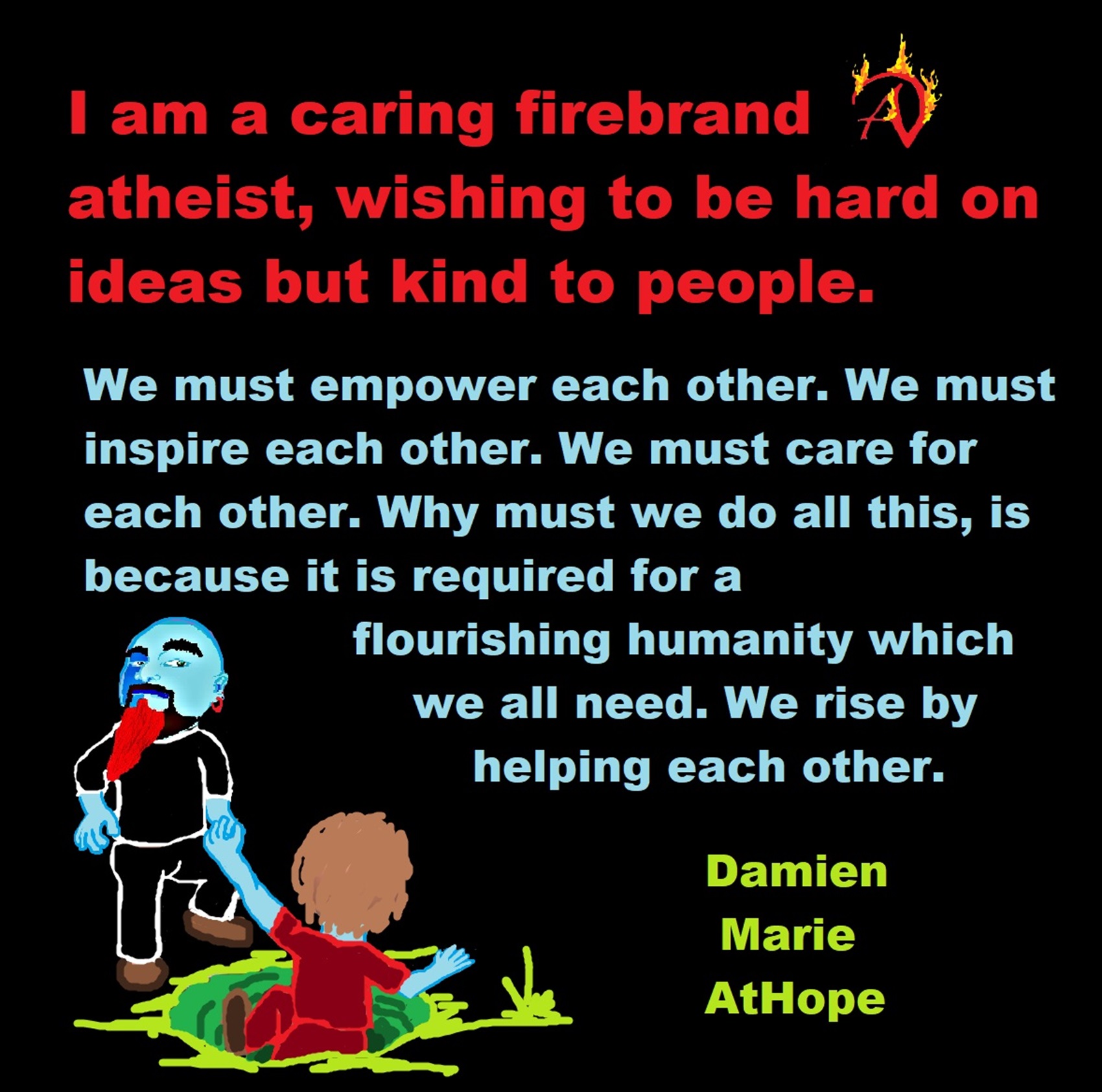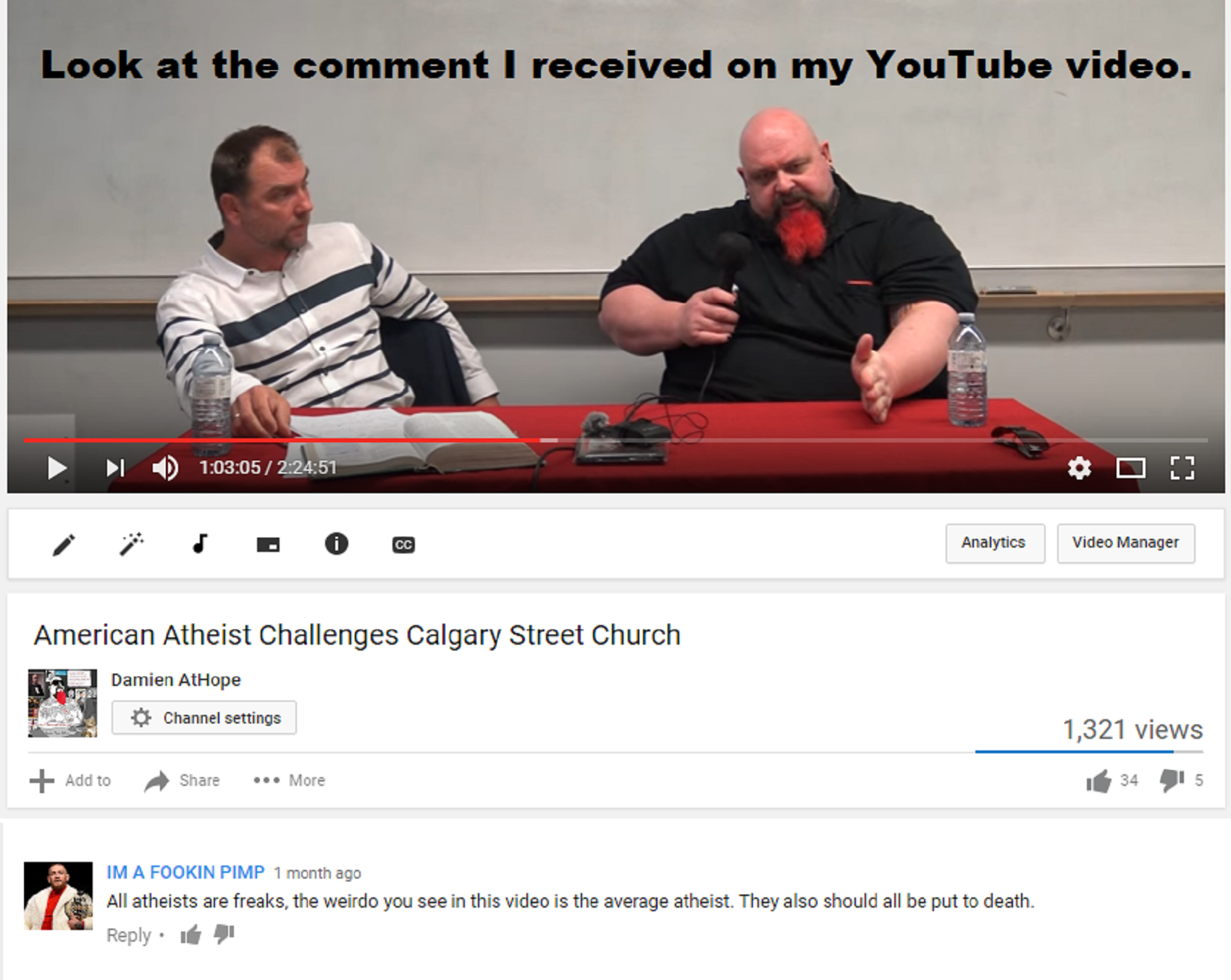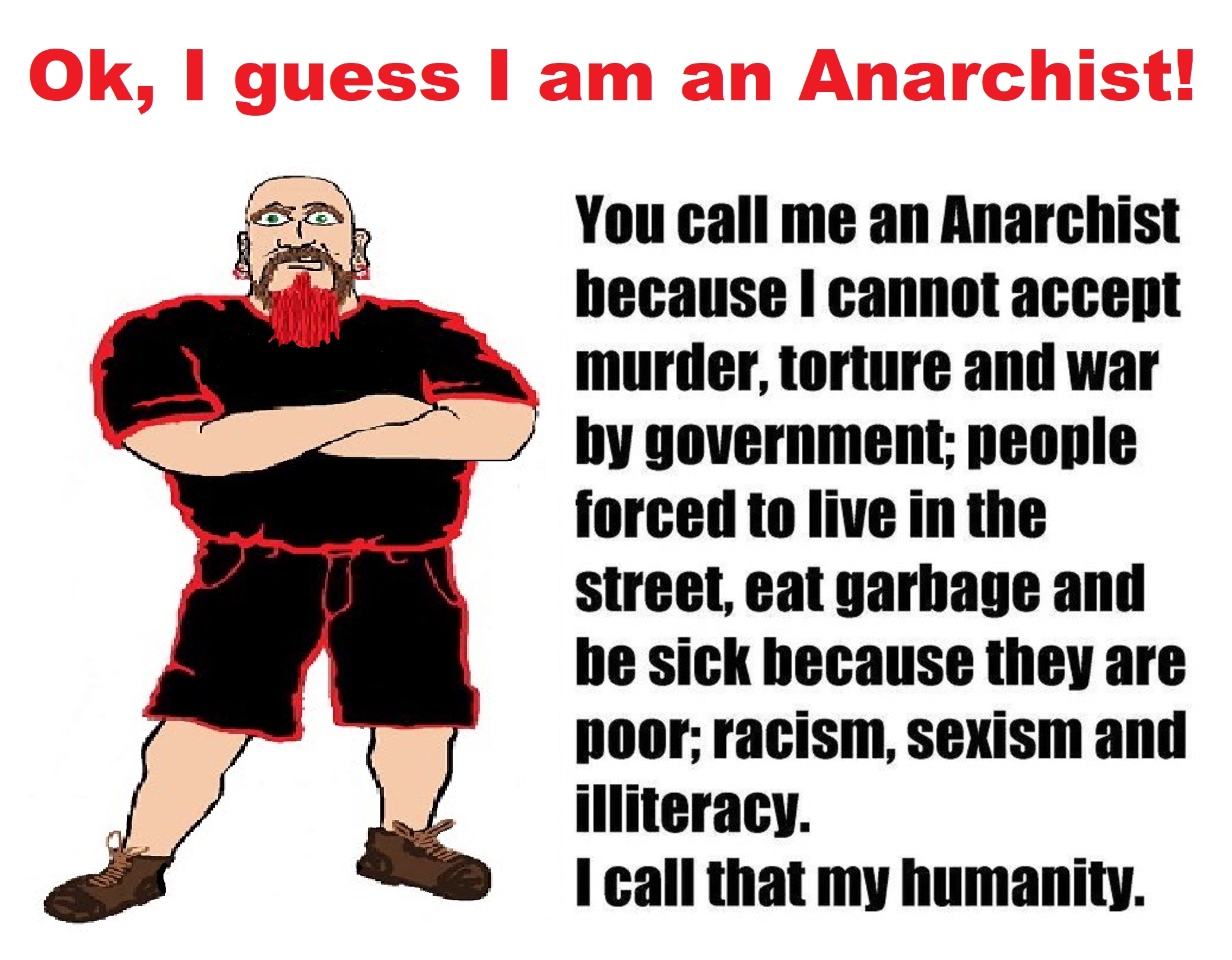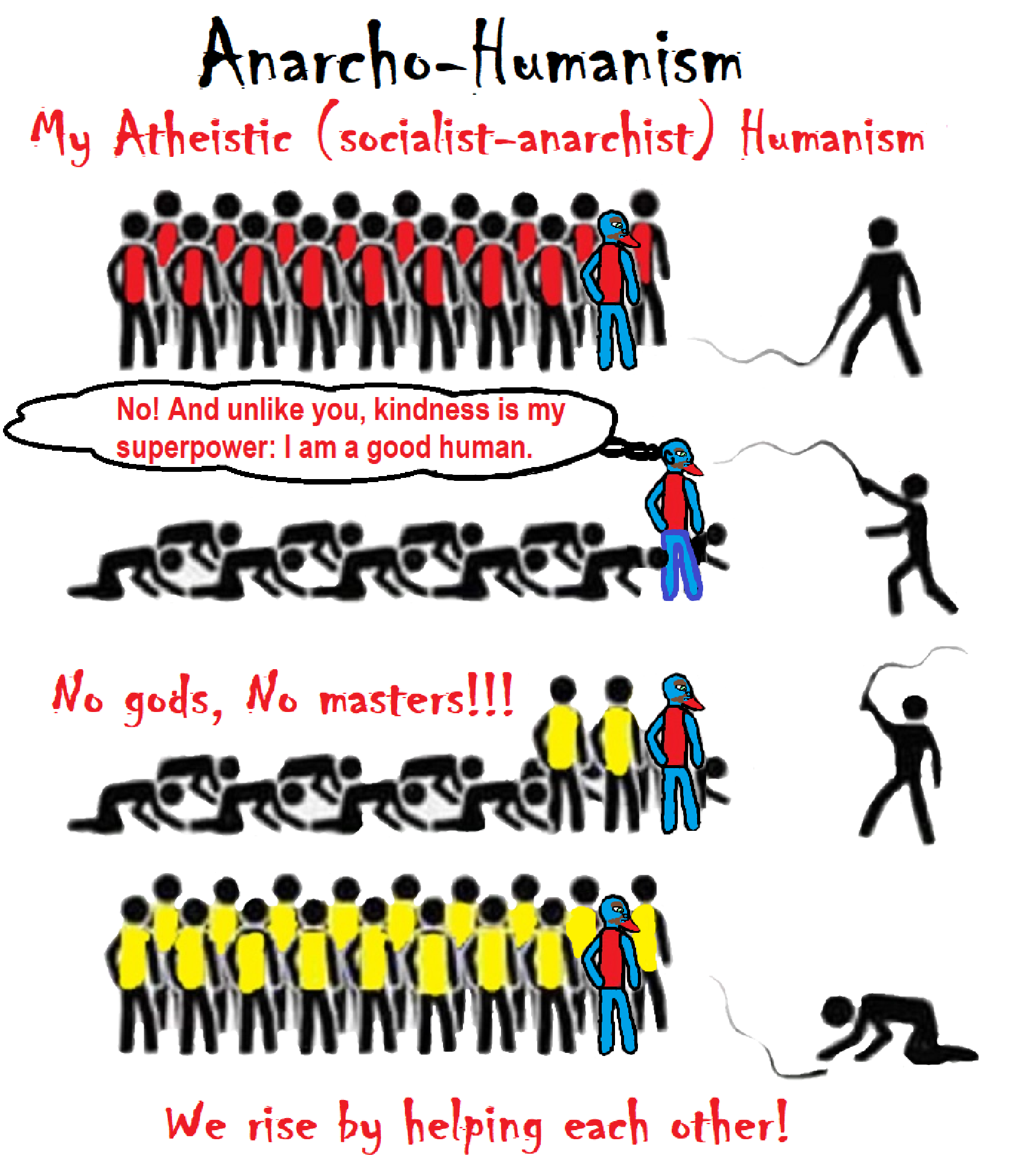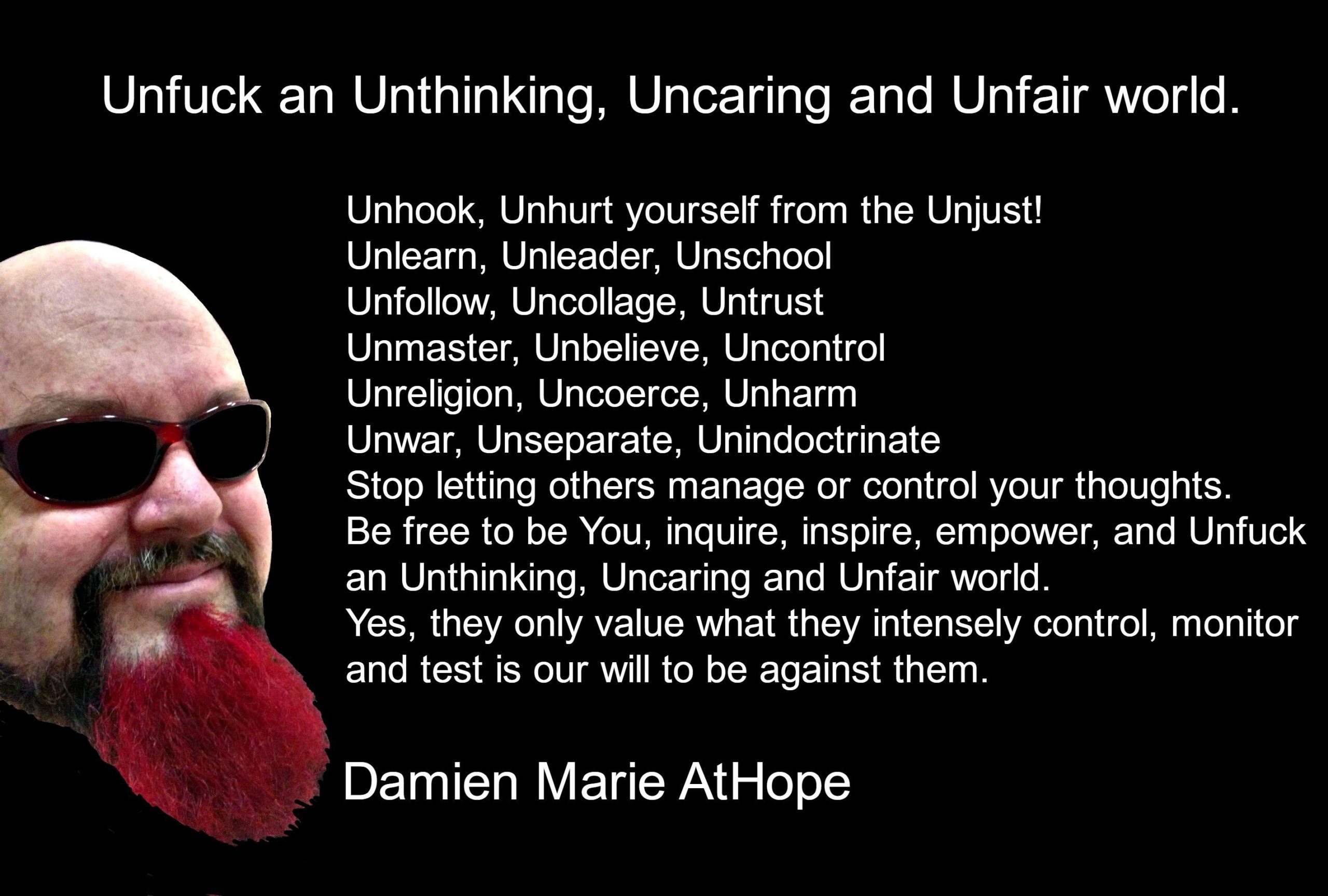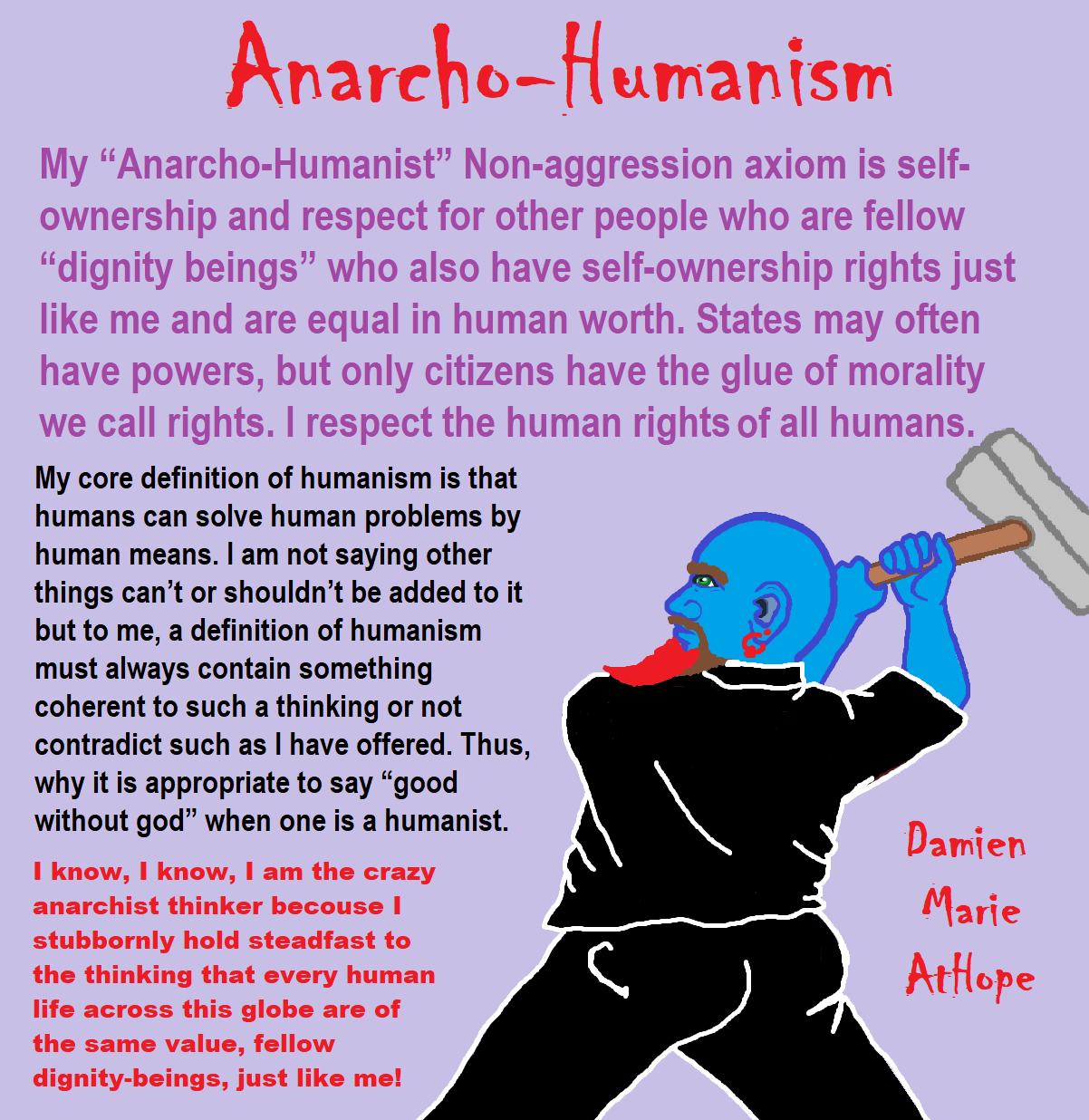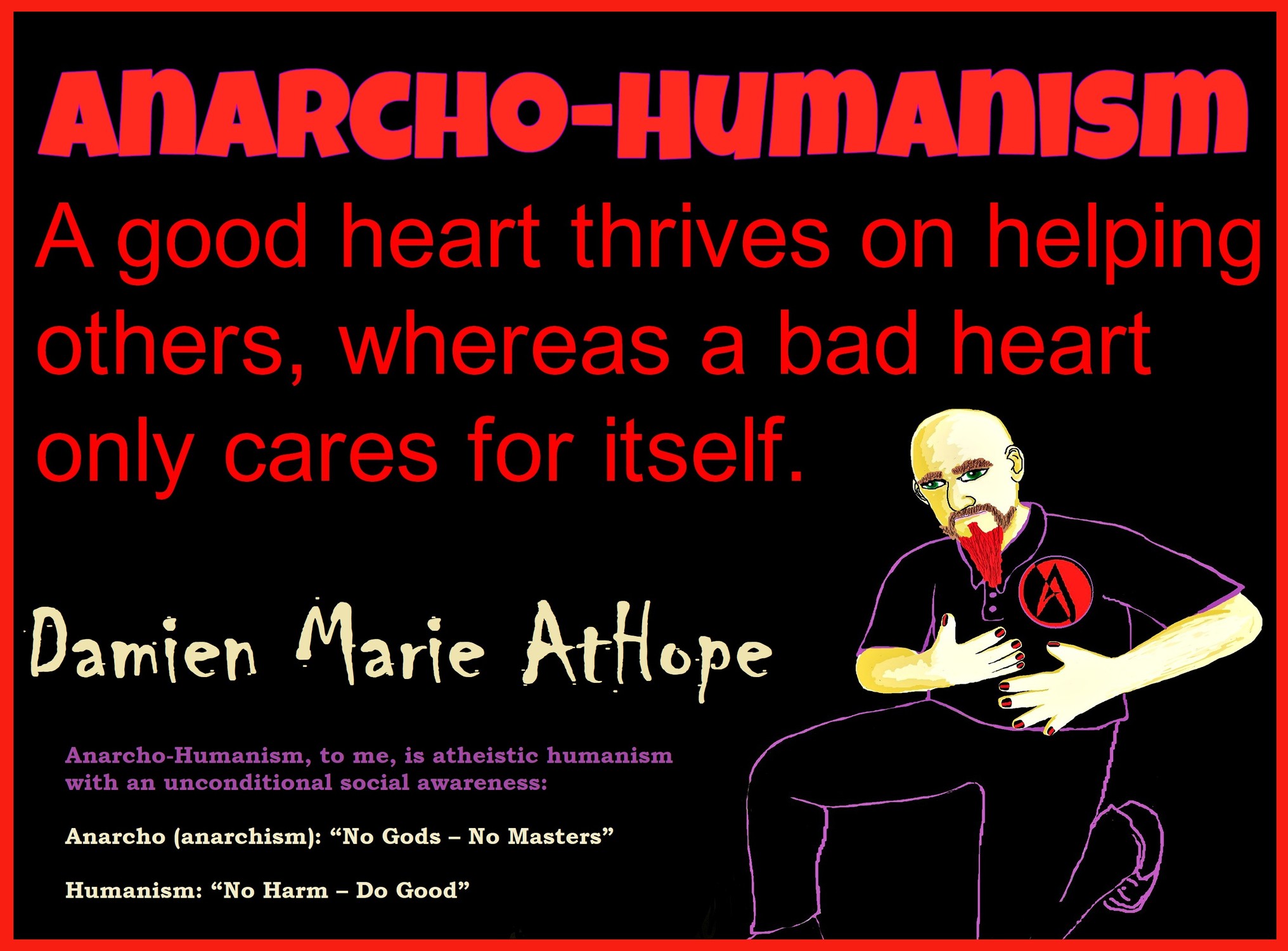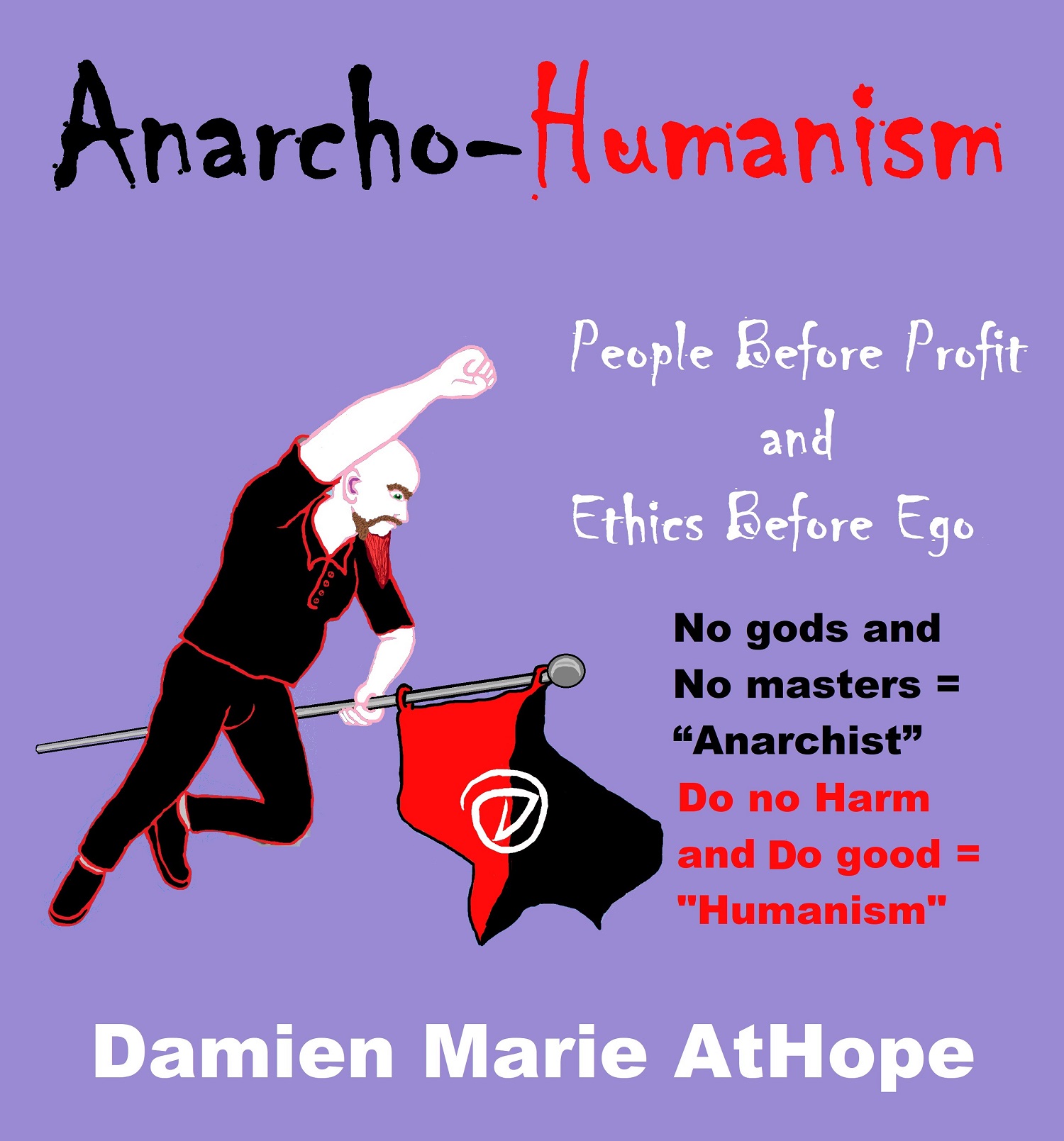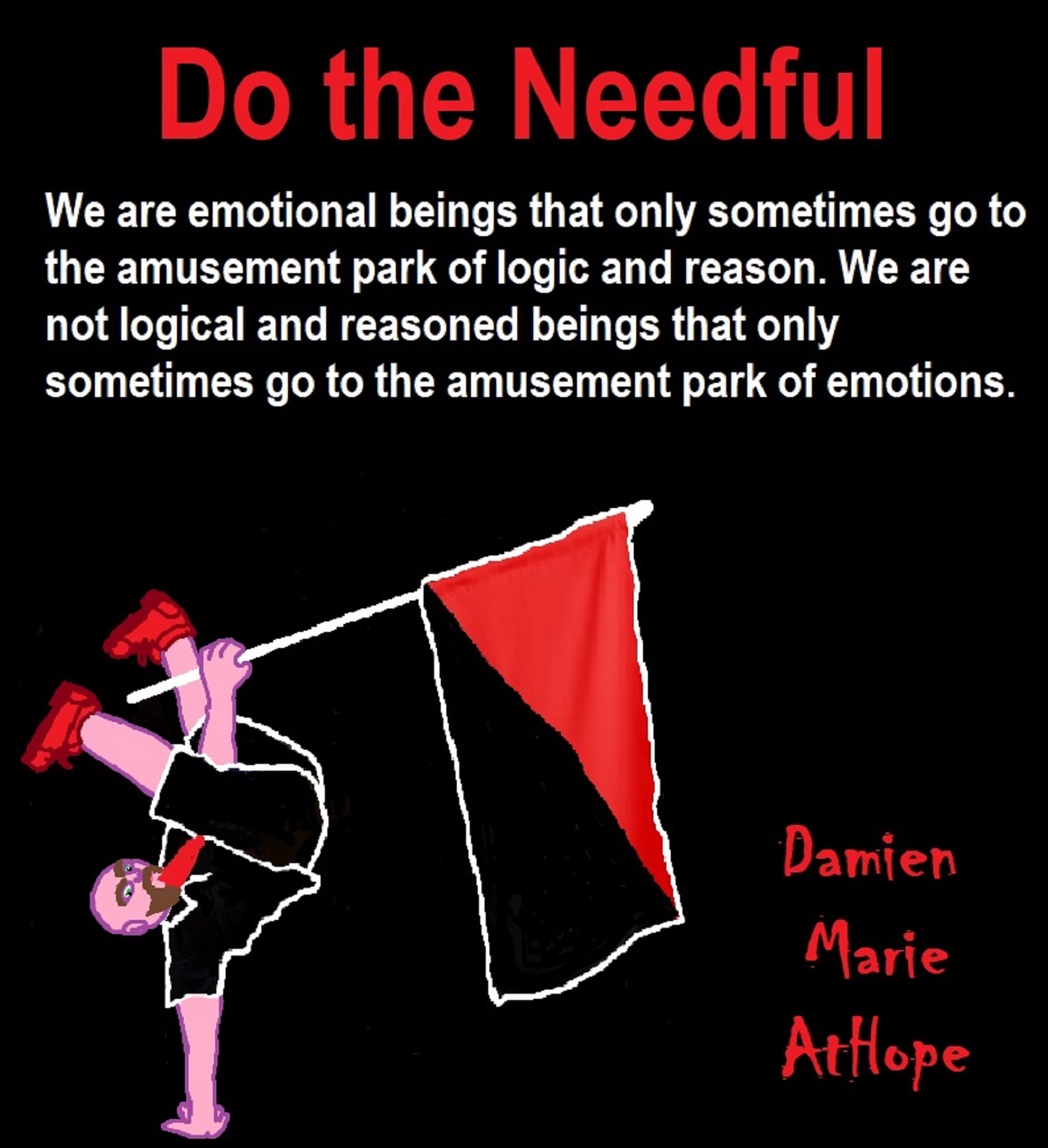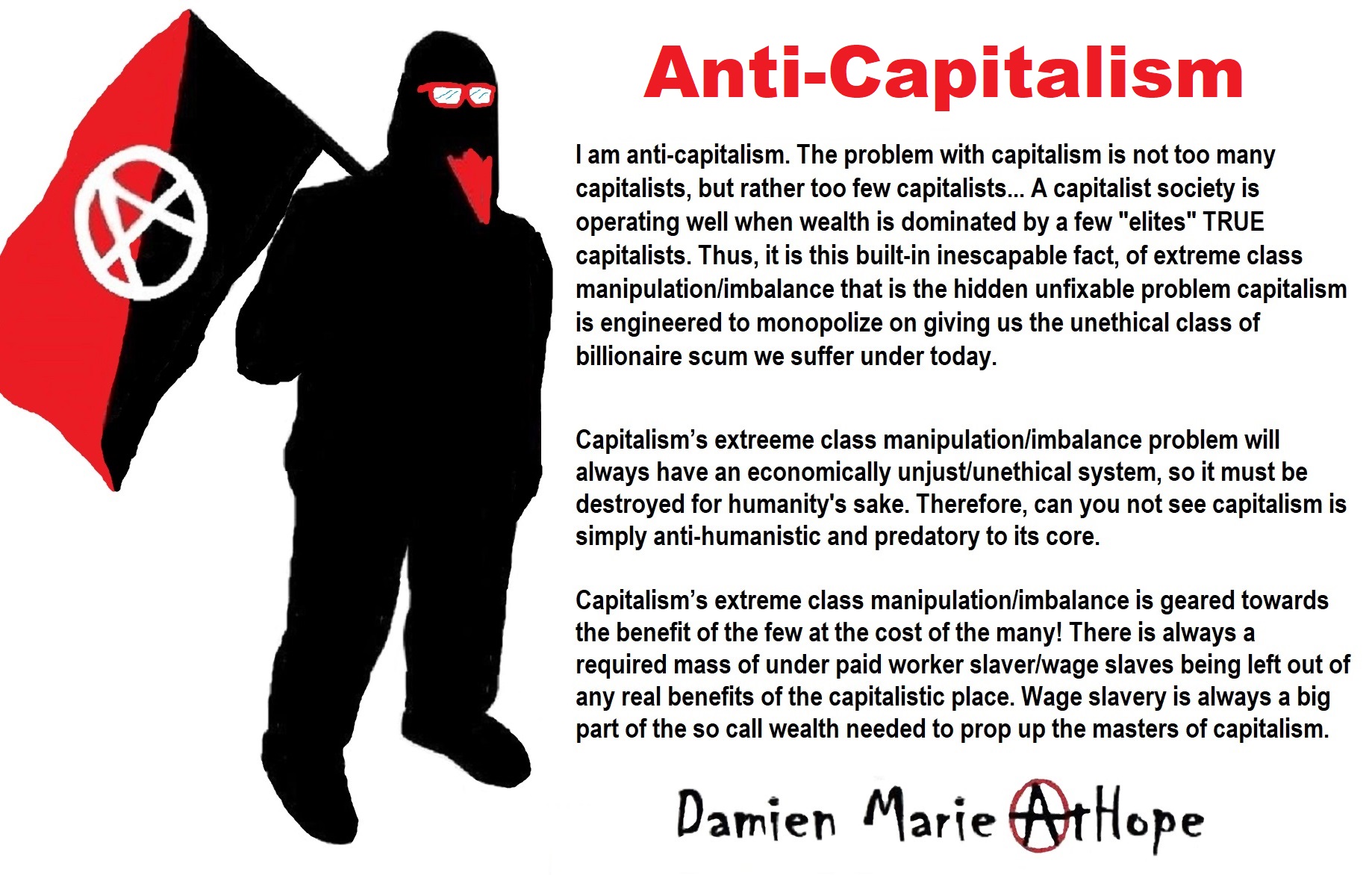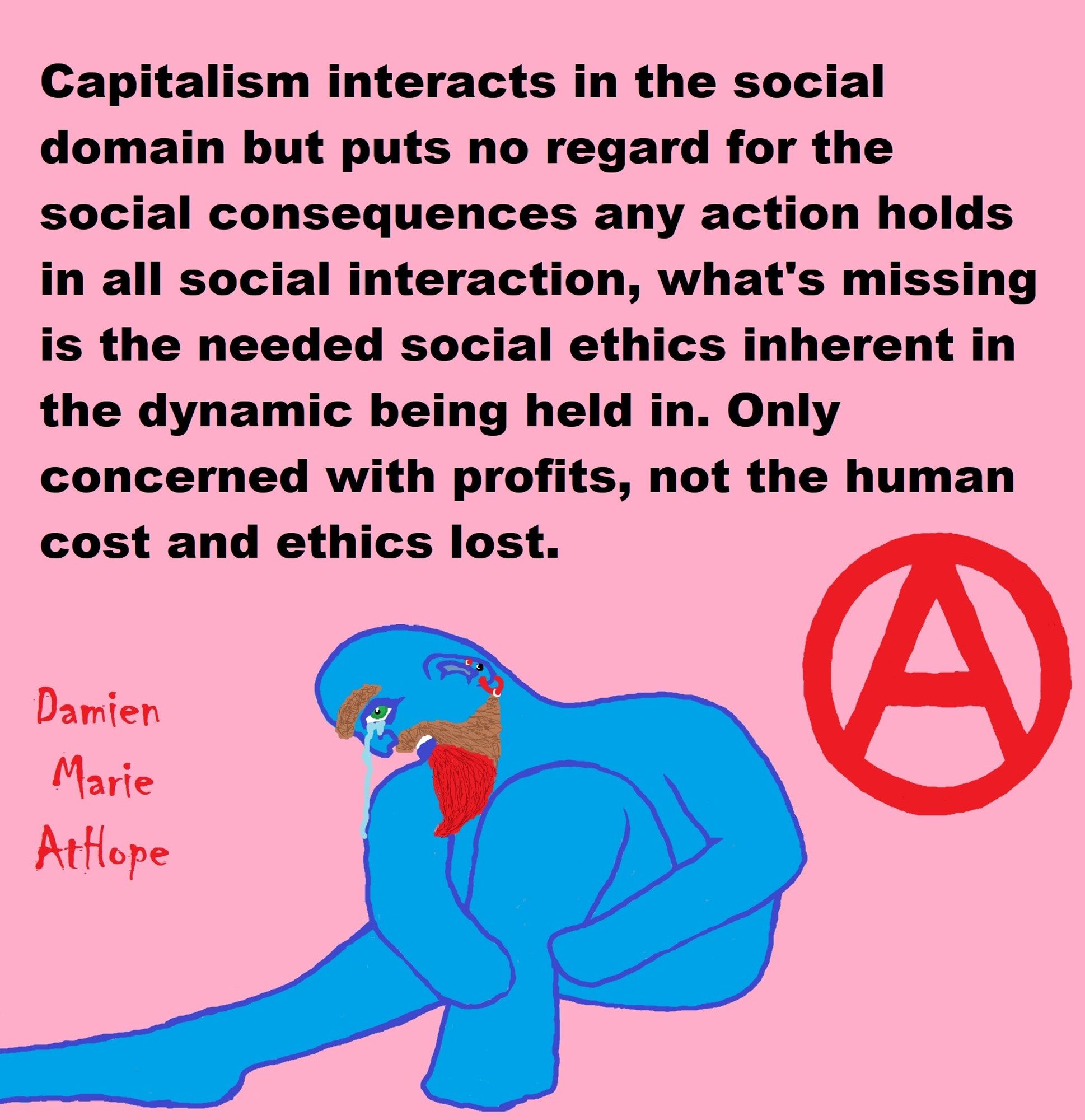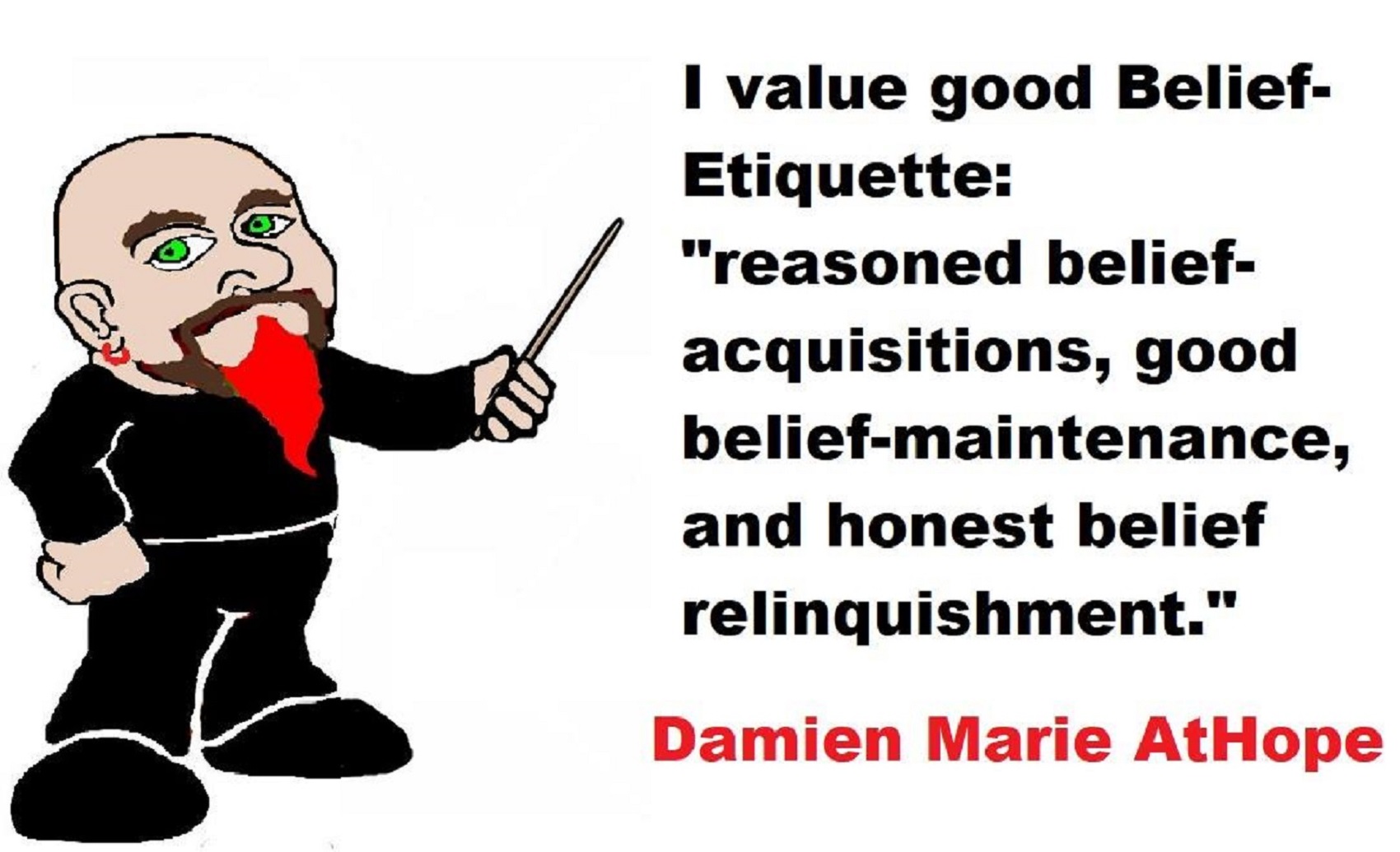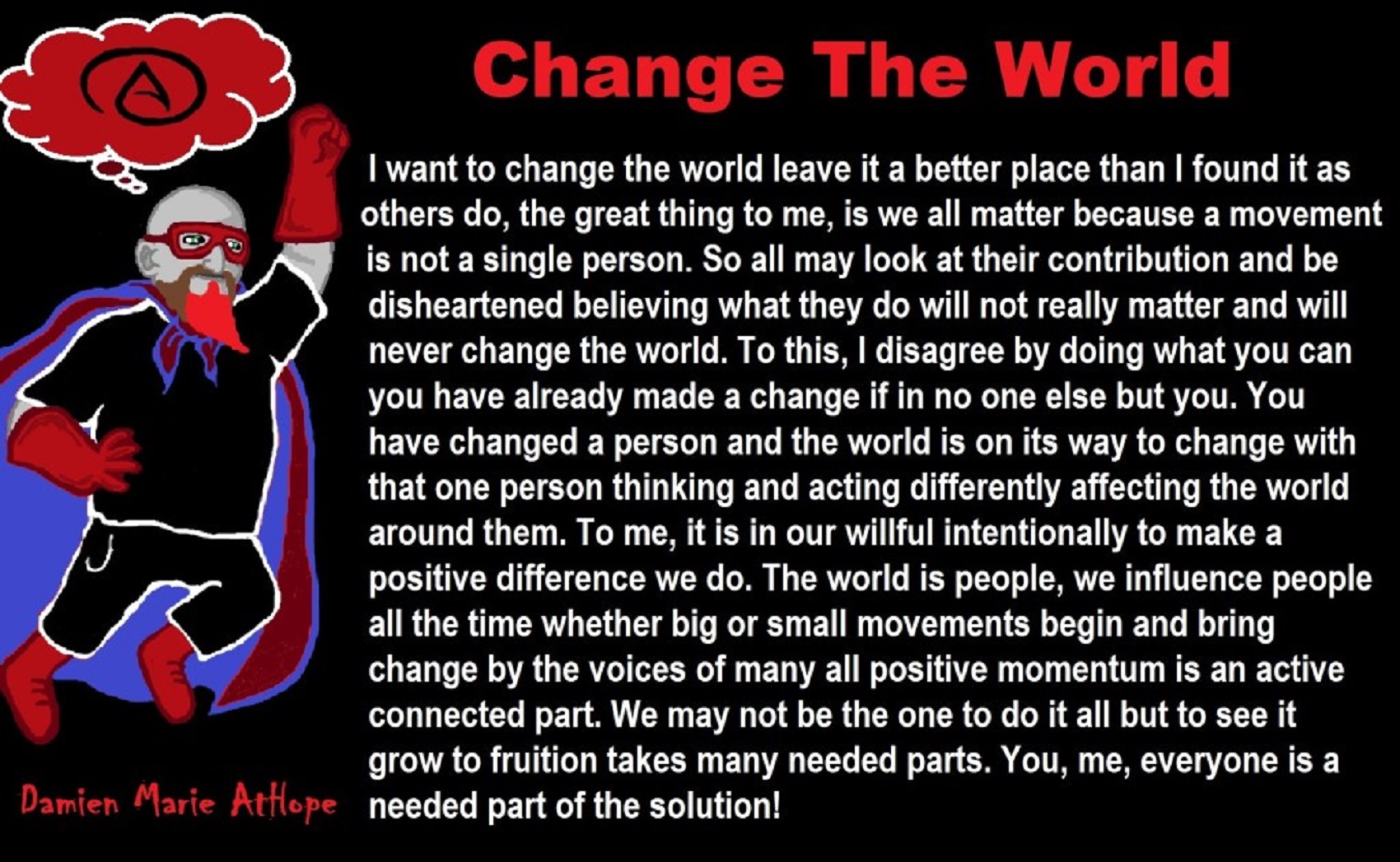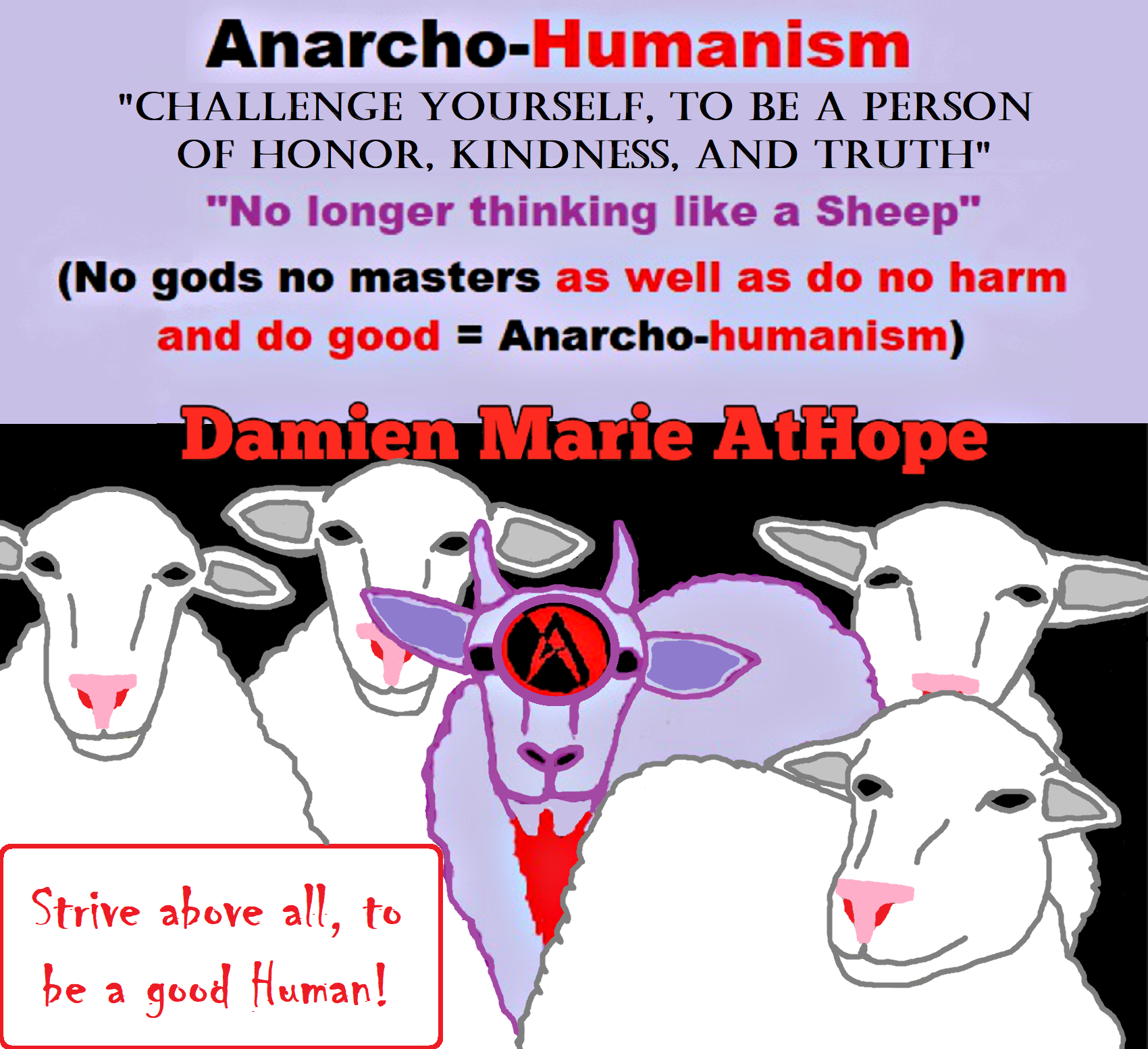
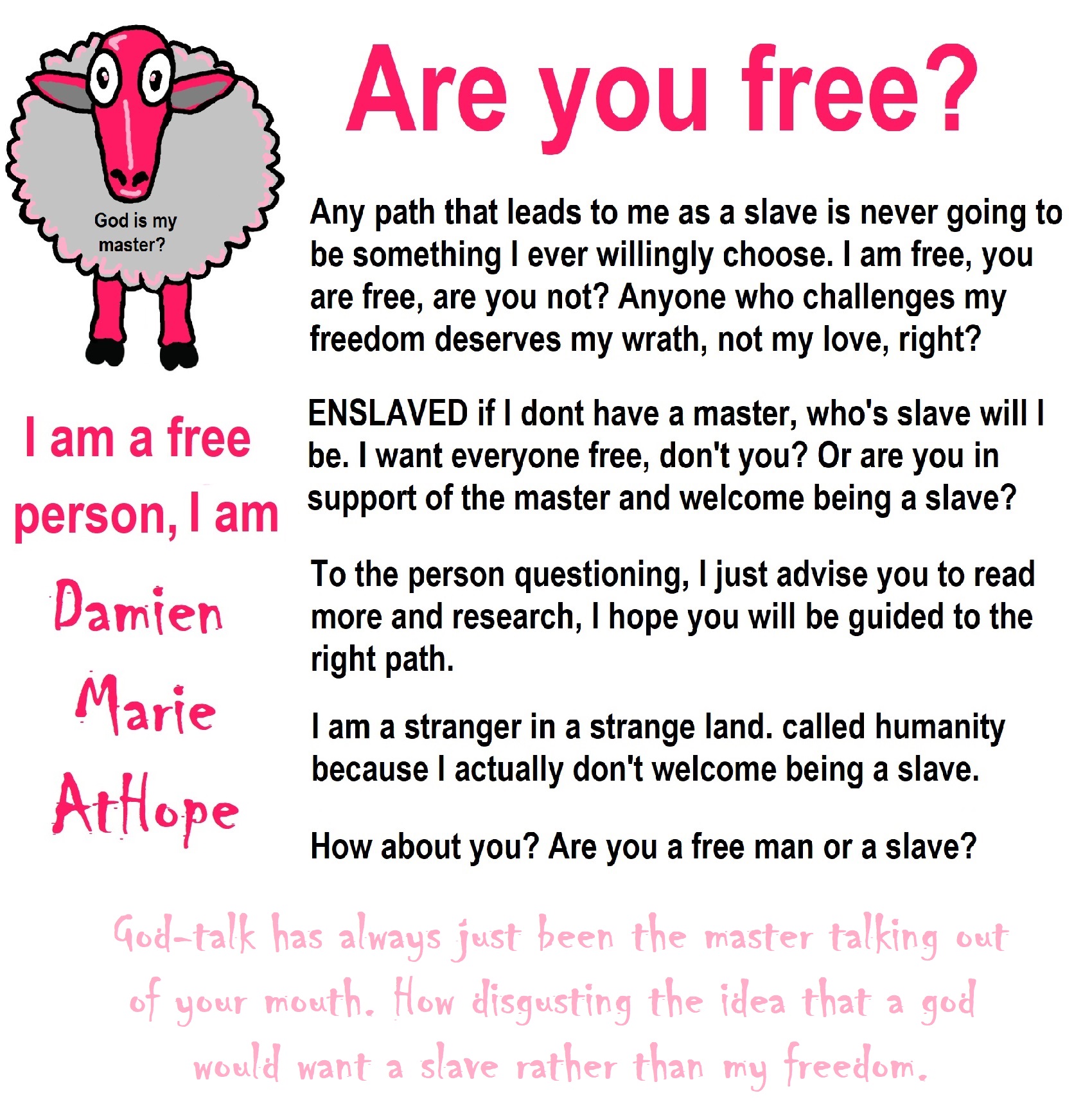

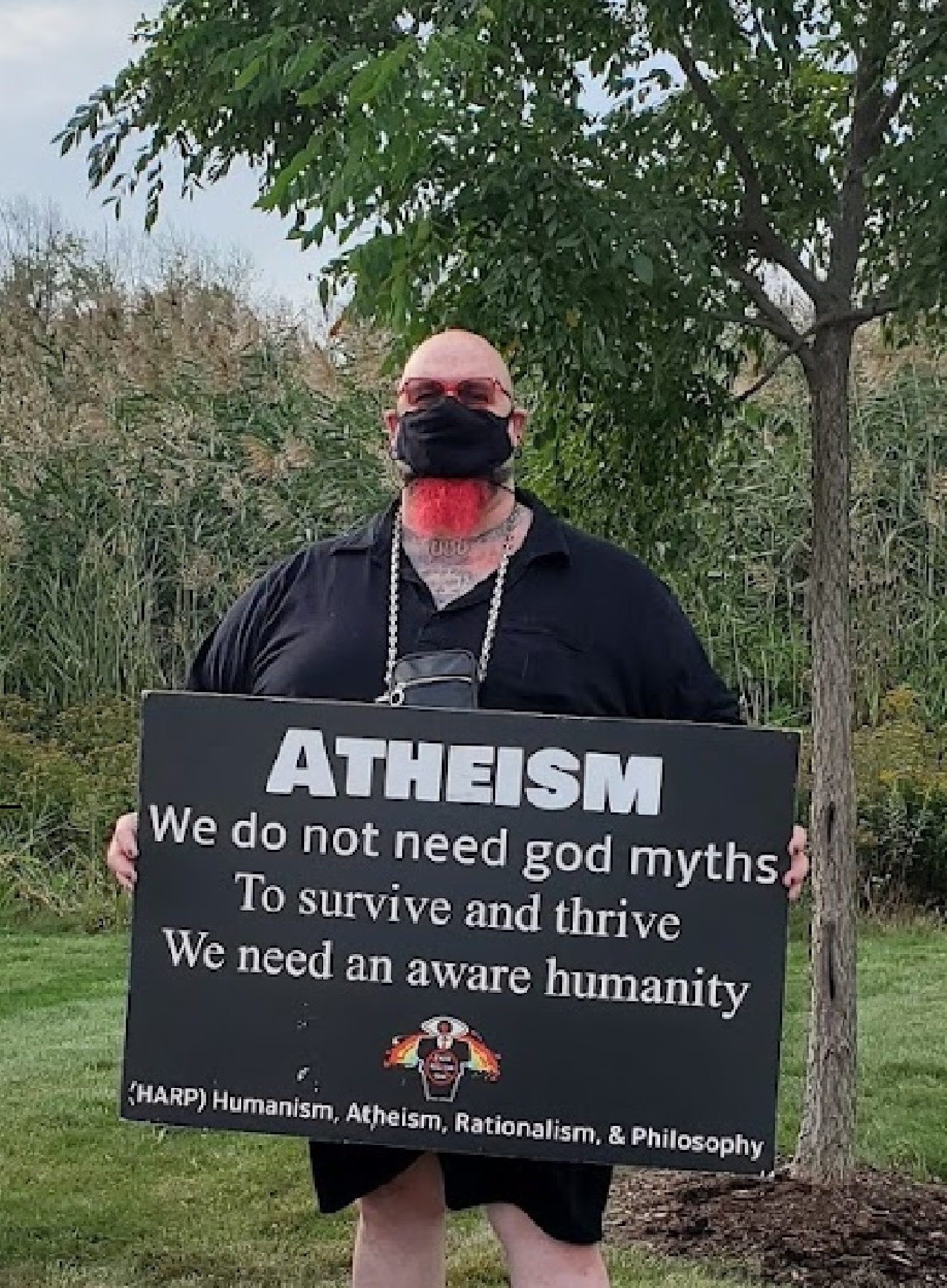
Anti-Left Propaganda?
Far-left politics
Left-wing politics
Social Progressivism and Counterculture
The so-called “New Left”
Left-wing Postmodernism
Ultra-Leftism
Left-Wing Terrorism?
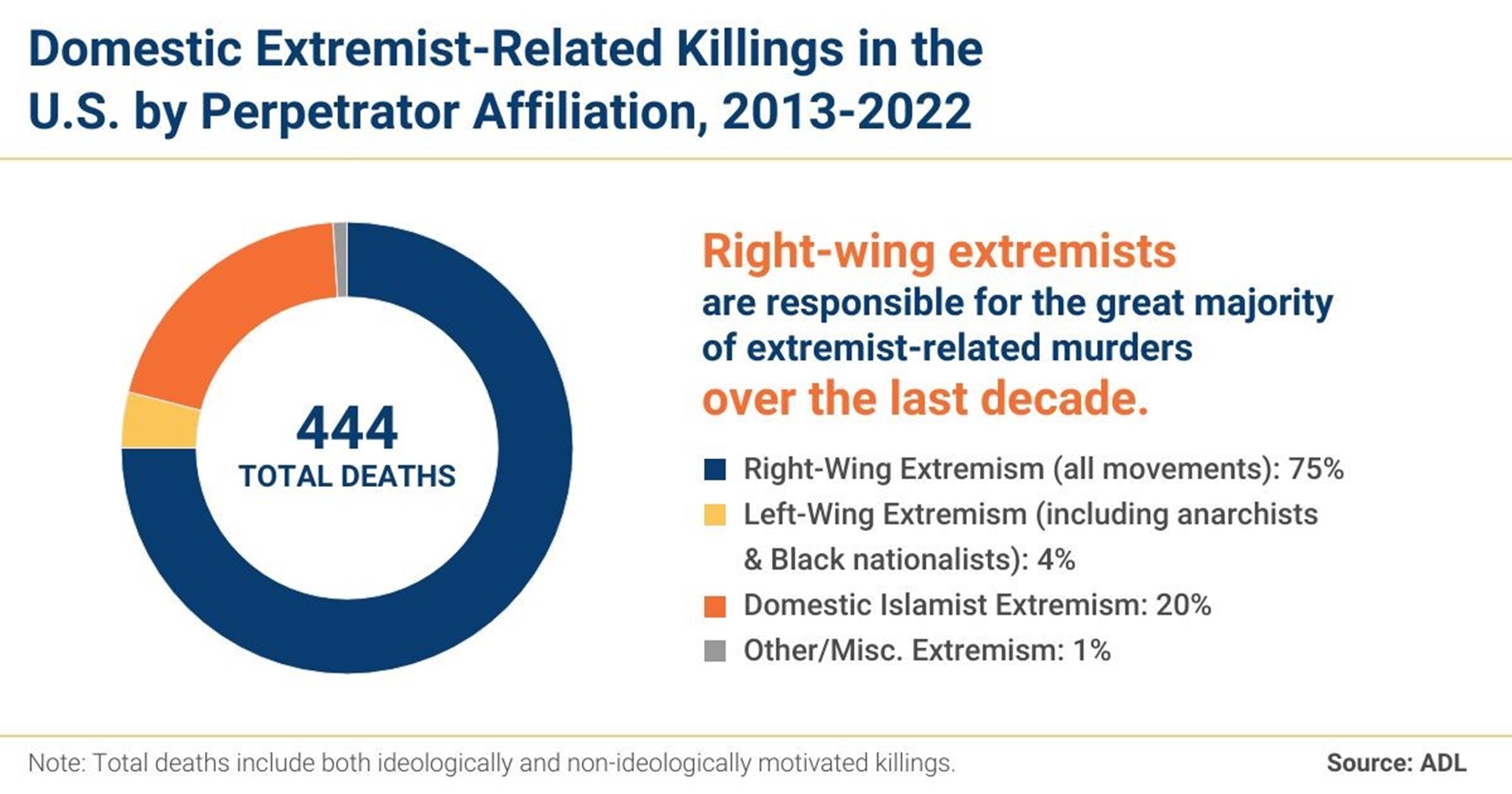


Far-right activists are using fake Twitter accounts and images of battered women to smear anti-fascist groups in the US, an online investigation has revealed.
The online campaign is using fake Antifa (an umbrella term for anti-fascist protestors) Twitter accounts to claim anti-fascists promote physically abusing women who support US President Donald Trump or white supremacy.
Researcher Eliot Higgins of website Bellingcat found evidence that the campaign is being orchestrated on internet messageboard 4Chan by far-right sympathisers.
One image shows the slogan “53% of white women voted for Trump, 53% of white women should look like this”, above a photograph of a woman with a bruised and cut face and an anti-fascist symbol.
The woman pictured is actually British actress Anna Friel and the photograph was taken for a Women’s Aid anti-domestic violence campaign in 2007.
The images first started circulating on social media late on 23 August with hashtags #PunchNazis, #MakeRacistsAfraidAgain and #BashTheFash.
Accounts appearing to belong to anti-fascist groups tweeted the memes, calling on activists to physically attack women who voted for Trump.
You might also be interested in:
The campaign appears to aim to discredit Antifa groups at a time of heightened tension in the United States after 32-year-old Heather Heyer was killed when protesting against a far-right march in Charlottesville last week.
Following the march, US President Donald Trump accused left-wing groups of being as equally to blame as far-right protestors for the violence, drawing widespread condemnation for equating the two.
Mr Higgins told the BBC the campaign was “pretty clumsy”, with obvious signs of being orchestrated.
“Many of the accounts tweeting the images were clearly made in the last ten hours and had very few followers,” Mr Higgins explained.
“This was a transparent and quite pathetic attempt, but I wouldn’t be surprised if white nationalist groups try to mount more sophisticated attacks in the future.”
Prominent far-right individuals such as Joseph Paul Watson also retweeted the memes.
Twitter account @RockMountAntifa, claiming to be an anti-fascist group in Utah, tweeted 29 of these images in four hours.
“She said she was right-wing, so I gave her a left hook,” one read.
However, the account shows tell-tale signs of being fake: The account was only created this month and its first tweet was on 24 August, while the only tweets posted were the 29 images.
Eliot Higgins, who traced evidence of chemical weapons use in Syria, found evidence the anti-Antifa campaign was organised on 4Chan, which has a reputation for acting as a meeting place for alt-right groups, and runs a “politically incorrect” board with extreme racist and homophobic comments.
Mr Higgins posted a screenshot of a call to action on the message board, which encouraged far-right sympathisers to search online for images of domestic violence, add their own slogan such as “She deserves it for being a Nazi,” then post them on social media using pre-determined hashtags. Ref
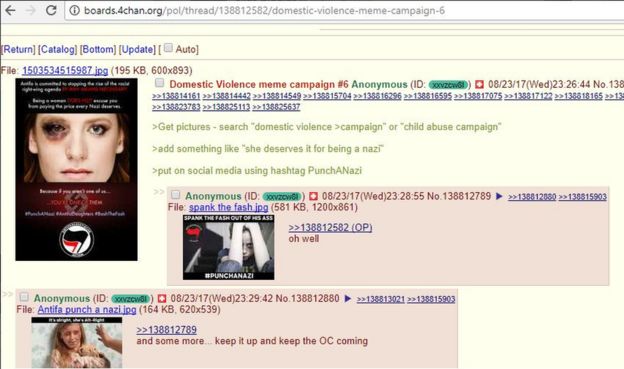
Antifa — short for “anti-fascist” — is the name for loosely affiliated, left-leaning anti-racist groups that monitor and track the activities of local neo-Nazis. The movement has no unified structure or national leadership but has emerged in the form of local bodies nationwide, particularly on the West Coast. Some of the groups, such as the 10-year-old Rose City Antifa in Portland, the oldest antifa group in the U.S., are particularly well-organized and active online and on Facebook, while its members are individually anonymous. President Trump has singled out antifa as part of what he calls the alt-left in his initial claim that “many sides” were to blame for violence in Charlottesville the weekend of Aug. 12, not just the neo-Nazis, KKK and white nationalists.
How is it pronounced?
“AN-tifa” with the emphasis on the first syllable, which sounds more like “on” in English than “an.” Far-left antifa demonstrators link arms at Chapman Square during a protest against President Trump in downtown Portland June 4, 2017, as police attempt to move them away from the square. (Photo: Ariane Kunze, AFP/Getty Images)
Anti-fascist groups, particularly in Europe, have been around for many decades, notably in Italy, against Mussolini, and in Germany, against Hitler. In the postwar period, antifa groups resurged to fight neo-Nazi groups, particularly in Germany. In the U.S., the anti-fascist movements grew out of leftist politics of the late ’80s, primarily under the umbrella of Anti-Racist Action.
What does the movement want?
The primary goal is to stop neo-Nazis and white supremacists from gaining a platform rather than to promote a specific antifa agenda. The antifa groups are decidedly anti-racist, anti-sexist and anti-homophobia, but also by and large socially leftist and anti-capitalist.
How do the groups operate?
Mark Bray, a lecturer and Dartmouth and author of the new book Antifa: The Antifascist Handbook, says the groups “organize educational campaigns, build community coalitions, monitor fascists, pressure venues to cancel their events, organize self-defense trainings and physically confront the far right when necessary.” A main goal is to try to deny fascists a public forum, which is why they turn out in numbers to physically confront neo-Nazis, the KKK and white supremacists at public demonstrations. They also step in to protect counter-protesters at such events. In addition, antifa is particularly active in “doxxing,” or identifying neo-Nazis and like-minded individuals and disseminating that private information to the public and employers to discourage people from joining their ranks.
Is antifa violent?
Members pointedly do not eschew violence but rather see themselves as engaging in “self-defense,” protecting other protesters and primarily confronting neo-Nazis and white supremacists to deny them a platform to publicly spread their views. “We are unapologetic about the reality that fighting fascism at points requires physical militancy,” Rose City Antifa’s Facebook page reads. “Anti-fascism is, by nature, a form of self-defense: the goal of fascism is to exterminate the vast majority of human beings.” Political activist and author Cornel West, speaking to Amy Goodman on the program Democracy Now about the clashes in Charlottesville, said antifa intervened when the “neofascists” move against his group of protesters. “We would have been crushed like cockroaches if it were not for the anarchists and the anti-fascists,” he said. Bray says the rise of fascism in the 1930s demonstrates that it was a mistake to allow such groups to air their views in hopes that public opinion would blunt their growth. “We should be wary of those who are more distressed about alleged violations of the speech of fascists than the actual violence they perpetrate,” he says.
Where has the movement demonstrated?
In addition to Charlottesville, antifa forces, who often dress in black and wear masks, have confronted or clashed with far-right groups in such places as the University of California at Berkeley, where protests by West Coast antifa forces, some of whom smashed windows and set fires, forced the cancellation of a speech by alt-right activist Milo Yiannopoulos in February and another by conservative commentator Ann Coulter in April. In June, antifa forces turned out to protest a pro-Trump free-speech in Portland. Some antifa counterprotesters began throwing objects at police, who responded with flash grenades and pepper balls, according to the Oregonian. Antifa was also out in force in June to confront Patriot Prayer, a free speech group protesting “political correctness and hatred” at Evergreen State College in Olympia, Wash. Ref
Anti-fascism is opposition to fascist ideologies, groups and individuals. The anti-fascist movement began in a few European countries in the 1920s, and eventually spread to other countries around the world. With the development and spread of Italian Fascism, i.e. original fascism, the National Fascist Party‘s ideology was met with increasingly militant opposition by Italian communists and socialists. Organizations such as the Arditi del Popolo and the Italian Anarchist Union were born in the period 1919–1921 to combat the nationalist and fascist surge of the post-World War I period. Thus as soon as fascism coalesced into a coherent ideology, a militant leftist opposition sprouted in response. Meanwhile, in the words of historian Eric Hobsbawm, as fascism developed and spread, a “nationalism of the left” developed in those nations threatened by Italian irredentism (e.g. the Balkans, and Albania in particular). After the outbreak of World War II, the Albanian, and Serbian resistances were instrumental in antifascist action and underground resistance. This combination of irreconcilable nationalisms and leftist partisans constitute the earliest roots of European anti-fascism. Less militant forms of anti-fascism arose later. For instance, during the 1930s in Britain, “Christians – especially the Church of England – provided both a language of opposition to fascism and inspired anti-fascist action”. The diversity of political entities that share only their anti-fascism has prompted the historian Norman Davies to argue in his book Europe at War 1939–1945: No Simple Victory that anti-fascism does not offer a coherent political ideology, but rather that it is an “empty vessel”. Davies further asserts that the concept of anti-fascism is a “mere political dance” created by Josef Stalin and spread by Soviet propaganda organs in an attempt to create the false impression that Western democrats by joining the USSR in the opposition to fascism could in general align themselves politically with communism. The motive would be to lend legitimacy to the dictatorship of the proletariat and was done at the time the USSR was pursuing a policy of collective security. Davies goes on to point out that with Winston Churchill as a notable exception, the concept of anti-fascism gained widespread support in the West, except that its credibility suffered a serious but temporary blow while the USSR and Nazi Germany coordinated their wars of aggression in Eastern Europe under their Molotov–Ribbentrop Pact. Anti-fascist movements emerged first in Italy, during the rise of Mussolini, but soon spread to other European countries and then globally. In the early period, Communist, socialist, anarchist and Christian workers and intellectuals were involved. Until 1928, the period of the United front, there was significant collaboration between the Communists and non-Communist anti-fascists. In 1928, the Comintern instituted its ultra-left “Third Period” policies, ending co-operation with other left groups, and denouncing social democrats as “social fascists“. From 1934 until the Molotov-Ribbentrop Pact, the Communists pursued a Popular Front approach, of building broad-based coalitions with liberal and even conservative anti-fascists. As fascism consolidated its power, and especially during World War II, anti-fascism largely took the form of Partisan or Resistance movements. There were fascist elements in the United States in the 1930s such as Friends of New Germany, German American Bund, the Ku Klux Klan, and Charles Coughlin. During the United States Red Scare after the end of World War II, the term “premature anti-fascist” came into currency to describe Americans who had strongly agitated or worked against fascism, such as by fighting for the Republicans in the Spanish Civil War, before fascism was seen as a proximate and existential threat to the United States (which only occurred generally after the invasion of Poland by Nazi Germany and universally after the attack on Pearl Harbor). The implication was that such persons were Communists or Communist sympathizers whose loyalty to the United States was suspect. However, historians John Earl Haynes and Harvey Klehr have written that no documentary evidence has been found of the US government referring to American members of the International Brigades as “premature antifascists”; the Federal Bureau of Investigation, Office of Strategic Services, and United States Army records used terms such as “Communist”, “Red”, “subversive”, and “radical” instead. Haynes and Klehr indicate that they have instead found many examples of members of the XV International Brigade and their supporters referring to themselves sardonically as “premature antifascists”.
After World War II
The anti-fascist movements which emerged during the period of classical fascism, both liberal and militant, continued after the defeat of the Axis powers in response to the resilience and mutation of fascism in Europe and elsewhere. In Germany, for example, in 1944, as Nazi rule crumbled, veterans of the 1930s anti-fascist struggles formed “Antifaschistische Ausschüsse,” “Antifaschistische Kommittees” or “Antifaschistische Aktion” groups (all typically abbreviated to Antifa). Antifa movements and Anti-Fascist Action networks are post-World War IIleft wing, often anarchist, extra-parliamentary political movements self-described as anti-fascist. Such movements have been active in several countries in the second half of the 20th and early 21st century.
History
Germany
Antifaschistische Aktion, an umbrella organisation for militant anti-fascists in Germany, was formed in 1932. It was sometimes called “Antifa”. Although it did not survive the war, local anti-fascist committees were formed across Germany, typically by veterans of this organisation, as Nazi rule crumbled in 1944, under the name “Antifa”. These anti-fascist committees often included communists, social democrats, and progressive Christians. In Communist East Germany, anti-fascism became part of the official ideology of state, and the abbreviation Antifa was used for various organs of the Communist state. For example, from 1961, the East German Socialist Unity Party used the term “Anti-Fascist Protection Rampart” (German: Antifaschistischer Schutzwall) as the official name for the Berlin Wall, in sharp contrast to the West Berlin city government which would sometimes refer to it as the “Wall of Shame“. The modern Germany movement most commonly associated with anti-fascism originated in the late 1980s, growing out of West Germany‘s squatter scene and autonomism movement. This movement ultimately has its origins in the student-based Außerparlamentarische Opposition and the values associated with the new social movements. Unlike the 1930s Antifaschistische Aktion, which was linked to the Communist Party of Germany, concerned with industrial working-class politics against Hitler’s NSDAP, the late 1980s and early 1990s “autonomists” were instead independent “anti-authoritarian” Libertarian Marxists and anarcho-communists, not associated with any particular party. The publication Antifaschistisches Infoblatt was in operation since 1987, seeking to expose radical nationalists publicly. In 2003, they joined Antifa-Net, part of an international network, including the likes of Britain’s Searchlight and Sweden’s Expo. It was after German reunification in 1990, that most of the Antifa groups were formed. For example, the Autonomen Antifa (M) was created in Göttingen in 1990. Following the rise of the National Democratic Party of Germany and some actions of extra-parliamentary violence such as the Solingen arson attack of 1993, more groups were formed. Antifaschistische Aktion Berlin, founded in 1993 was one of the more prominent groups and the Antifaschistische Aktion/Bundesweite Organisation was founded to coordinate these groups across Germany. Aside from their violent clashes with ultra-nationalists, these groups participated in the annual May Day in Kreuzberg, which typically end in large scale riots. The German Antifa movement fractured in 2001 into two camps; the Anti-Germans (who are pro-Israel) and the Anti-Imperialists (who take the more standard stance of Anti-Zionism). The AA/BO splintered into different groups as a result of this. According to the Germanintelligence agencyFederal Office for the Protection of the Constitution, the contemporary anti-fascist movement in Germany includes those who are willing to use violence. Militant behaviour against police is an expression of the “Autonome Szene” and part of the concept “Antifaschistische Aktion”. There are illustrations made public in the antifascist movement with mottoes that sometimes call for not only violence against police or skinheads but also bishops and judges. There are slogans like “antifascism means attack” not only against neonazis but also against the civil and capitalist system of the “Bundesrepublik Deutschland”. In modern usage, anti-fascism is sometimes shortened to “Antifa”. One of the bigger antifascist campaigns in Germany in recent years was the effort to block the annual Neo-Nazi marches in Dresden.
Sweden: Antifascistisk Aktion activities
Antifascistisk Aktion (AFA) is an anti-fascist group founded in Sweden in 1993. AFA’s Activity Guide advocates violence against neo-Nazis. Some in the mainstream media have labelled them left-wing extremists. An editorial in the tabloid newspaper Expressen argued that the label anti-fascist was misleading, because of the organization’s methods, such as stealing the subscriber list of the National Democrats newspaper, and threatening the subscribers. Other critics say the group does not respect freedom of speech, because some members have attacked moderate conservatives and other nationalists.
Twenty-first century
In the 2010s, self-described anti-fascist groups have become increasingly active in Western Europe and North America. These loose collectives first arose in the early 2010s in response to growing nationalism in countries including the United States, United Kingdom, Denmark, Germany, and France. In the US, anti-fascist groups had existed since at least 1988 in the form of the Anti-Racist Action, but an American movement using the same name has become increasingly active since 2016, often affiliated with anarchism, and have become known for their clashes with far-right and alt-right groups. US anti-fascist activities have sometimes included violent disruptions and demonstrations, drawing criticism from both the political right and political left.
The Media Is Busy Creating a Left-Wing ‘Threat’
to Balance Out the Awful Racist Right-Wing Hordes That Threaten Civil Society
In these dark days, an intergenerational warning is in order: Antifa folks, be wary. They are coming for you. Some of us have seen this movie before. In my generation, when I was a teenage member of MSU’s SDS in the late 1960s, I remember the guy who was always yelling, “Kill the pigs,” and encouraging us to burn down the ROTC building on campus. In later years, I heard from old SDS colleagues that when they sued the police, they learned that the outspoken guy was a police officer and his friends were informants. For my dad’s generation, the right-wing takeover of a protest movement happened in Germany generations ago, so most Americans don’t even recognize Marinus van der Lubbe’s name. But the Germans remember well that fateful day 84 years ago: Feb. 27, 1933. And many of them are looking at the confrontations in our streets and worrying. It started when the government, struggling with questions of its own legitimacy and the instability of its leader, received reports of an imminent terrorist attack. Historians are still debating whether the “terrorist” was a mentally incompetent young man maneuvered into place to take the fall for the crime, or was an actual communist ideologue (of limited intellectual means and probably schizophrenic; that seems to be one thing most agree on). But the warnings of investigators were ignored at the highest levels, in part because the government was distracted; the man who claimed to be the nation’s leader had not been elected by a majority vote and the people claimed he had no right to the powers he coveted. He was a simpleton, some said, a cartoon character of a man who saw things in black-and-white terms and didn’t have the intellect to understand the subtleties of running a nation in a complex and internationalist world. His coarse use of language, reflecting his background of hanging out with disreputable sorts, and his simplistic and often-inflammatory nationalistic rhetoric offended the aristocrats, foreign leaders, and the well-educated elite in the government and media. He desperately wanted to be appreciated and loved by the “old money” crowd, but he also hated them because they had never accepted him and, deep down inside, he knew they never would. Nonetheless, he knew the terrorist was going to strike, and he had already considered his response. When an aide brought him word that the nation’s most prestigious building was ablaze, he rushed to the scene and called a press conference. “You are now witnessing the beginning of a great epoch in history,” Hitler proclaimed, standing in front of the burned-out German Parliament building, surrounded by national media. “This fire,” he said, his voice trembling with emotion, “is the beginning.” He used the occasion—”a sign from God,” he called it—to declare an “all-out war on terrorism” and its ideological sponsors, a people, he said, who traced their origins to the Middle East and found motivation for their evil deeds in their religion. And, he said, their fellow travelers —”communists” like the man who’d set the Reichstag on fire—needed to be tracked down and utterly destroyed. Two weeks later, the first detention center for terrorists was built in Oranianburg to hold the first suspected allies of the infamous terrorist. In a national outburst of patriotism, the leader’s flag was everywhere, even printed large in newspapers suitable for window display. Within four weeks of the terrorist attack, the nation’s now-popular leader had pushed through legislation, in the name of combating terrorism and fighting the philosophy he said spawned it, that suspended constitutional guarantees of free speech, privacy, and habeas corpus. Police could now intercept mail and wiretap phones; suspected terrorists could be imprisoned without specific charges and without access to their lawyers; police could sneak into people’s homes without warrants and peek around without homeowners know it, if the cases involved terrorism. To get his patriotic “Decree on the Protection of People and State” passed over the objections of concerned legislators and civil libertarians, he agreed to put a four-year sunset provision on it: if the national emergency provoked by the terrorist attack was over by then, the freedoms and rights would be returned to the people, and the police agencies would be re-restrained. Just like with America’s recent Patriot Act, the first version of which had sunset provisions, legislators would later say they hadn’t had time to read the bill before voting on it. Immediately after passage of the anti-terrorism act, his federal police agencies stepped up their program of arresting suspicious persons and holding them without access to lawyers or courts. In the first year only a few hundred were interred, and those who objected were largely ignored by the mainstream press, which was afraid to offend and thus lose access to a leader who was so newsworthy. Citizens who protested the leader in public— and there were many—quickly found themselves confronting the newly empowered police’s batons, gas, and jail cells, or fenced off in protest zones safely out of earshot of the leader’s public speeches. (In the meantime, he was constantly talking up the threat of these “other people” among the German people, while armed gangs terrorized minorities and smashed windows in Jewish-owned businesses.) Within the first months after that terrorist attack, at the suggestion of a political adviser, he brought a formerly obscure word into common usage. He wanted to stir a “racial pride” among his white countrymen, so instead of referring to the nation by its name, he began to refer to it as the “Homeland,” a phrase publicly promoted in the introduction to a 1934 speech recorded in Leni Riefenstahl’s famous propaganda movie “Triumph Of The Will.” As hoped, people’s hearts swelled with pride, and the beginning of an us-versus-them mentality was sewn. Our land was the homeland, citizens thought: all others were simply foreign lands. We are the “true people,” he suggested, the only ones worthy of our nation’s concern; if bombs fall on others, or human rights are violated in other nations and it makes our lives better, it’s of little concern to us. Playing on this new nationalism, and exploiting a disagreement with the French over his increasing militarism, he argued that any international body that didn’t put Germany first was neither relevant nor useful. He thus withdrew his country from the League of Nations in October, 1933, and then negotiated a separate naval armaments agreement with Anthony Eden of the United Kingdom. His propaganda minister orchestrated a campaign to ensure the people that he was supported by the power brokers of the most fervent of Germany’s Christian sects. He even proclaimed the need for a revival of the Christian faith across his nation, what he called a “New Christianity.” Every man in his rapidly growing army wore a belt buckle that declared “Gott Mit Uns” (God Is With Us) and most of them fervently believed it was true. Within a year of the terrorist attack, the nation’s leader determined that the various local police and federal agencies around the nation were lacking the clear communication and overall coordinated administration necessary to deal with the terrorist threat facing the nation, particularly the troublesome “intellectuals” and “liberals.” He proposed a single new national agency to protect the security of the Homeland, consolidating the actions of dozens of previously independent police, border, and investigative agencies under a single leader. He appointed one of his most trusted associates to be leader of this new agency, the Central Security Office for the Homeland, and gave it a role in the government equal to the other major departments. His assistant who dealt with the press noted that, since the terrorist attack, “Radio and press are at our disposal.” Those voices questioning the legitimacy of their nation’s leader, or raising questions about his checkered past, had by now faded from the public’s recollection, as his central security office began advertising a “See Something, Say Something” program encouraging people to phone in tips about suspicious neighbors. Those denounced often included opposition politicians and celebrities who dared speak out—a favorite target of his regime. He began a campaign to discredit the press; he called them the Lugenpresse, or “lying press” (“fake news” in today’s vernacular). The phrase was repeated endlessly until all the free press was shut down in 1934. By 1935, all the radio stations and newspapers were owned by wealthy, hard-right friends of his regime. To consolidate his power, he concluded that government alone wasn’t enough. He reached out to industry and forged an alliance, bringing former executives of the nation’s largest corporations into high government positions. A flood of government money poured into corporate coffers to fight the war against the “leftist terrorists” lurking within the Homeland, and to prepare for wars overseas. He encouraged large corporations friendly to him to acquire media outlets and other industrial concerns across the nation, particularly those previously owned by liberals or Jews. He built powerful alliances with industry; one corporate ally got the lucrative contract worth millions to build the first large-scale detention center for enemies of the state. Soon more would follow. Industry flourished. But after an interval of peace following the terrorist attack, voices of dissent again arose within and without the government. Students had started an active program opposing him (known as the White Rose Society), and leaders of nearby nations were speaking out against his bellicose rhetoric. He needed a diversion, something to direct people away from the corporate cronyism being exposed in his own government, and away from questions of his illegitimate rise to power. To deal with those who dissented from his policies, at the advice of his politically savvy advisors, he and his handmaidens in the press began a campaign to equate him and his policies with patriotism and the nation itself. National unity was essential, they said, to ensure that the terrorists or their sponsors didn’t think they’d succeeded in splitting the nation or weakening its will. In times of war, they said, there could be only “one people, one nation, and one commander-in-chief” (“Ein Volk, ein Reich, ein Fuhrer”), and so his advocates in the media began a nationwide campaign charging that critics of his policies were attacking the nation itself. Hitler and his friends in the right-wing press repeatedly told the people that the majority, the “silent majority” of good Germans, hated the leftists. Those questioning him were labeled “communists,” “anti-German” or “not good Germans,” and it was suggested they were aiding the enemies of the state by failing in the patriotic necessity of supporting the nation’s valiant men in uniform. It was one of his most effective ways to stifle dissent and pit wage-earning people (from whom most of the police and army came) against the “intellectuals and liberals” who were critical of his policies. He spoke openly of his “love” for police and the military, and they in turn embraced him with fervor, redoubling the violence they wrought against peaceful protestors. Hitler’s rise to power was largely on the backs of the labor and communist movements. They were his “enemies” first and foremost (although anti-Semitism had been part of his shtick from the beginning: his main attack was that the labor and communist movements were filled with Jews). And he largely destroyed them when he successfully sold the German people on the idea that the “left” was responsible for burning down the Parliament building, the 9/11 event of that day. There’s little doubt in my mind, having lived through the era of COINTELPRO and the Patriot Act, that somewhere out there is a person who’s planning to commit an act of terrorism. It may be a dedicated but deluded left-winger, or more likely, a right-winger hoping to stir things up by pretending to be a left-winger. And Trump and his friendly “news” outlets are ready to use it. Perhaps apocryphally, Mark Twain once noted that, “History doesn’t repeat itself, but it rhymes.” There’s no shortage of examples of that rhyme, and given all the “mainstream” press now being thrown at the Antifa movement, it’s a sure thing that they’re going to be the administration’s and the media’s next big boogeyman. Somewhere out there is the next Marinus van der Lubbe, and Trump and his press are ready. Thom Hartmann is a talk-show host and author of over 25 books in print. Ref
You claim the left is a threat, when Stormfront:
‘murder capital of internet’ pulled offline after civil rights action.
Web.com pulls support for one of the oldest and largest neo-nazi hate sites following campaign by Lawyers’ Committee for Civil Rights Under Law
How to Recognize Russian Propaganda on Social Media
If you look at social media a lot, as I do, you might be startled by how many of your fellow Americans were…unbothered by Nazis and white supremacists marching in Charlottesville two weeks ago. In the days after the clashes in Virginia that led to the killing of Heather Heyer and the beating of DeAndre Harris, a good number of people popped up in my social media feeds, countering that “Antifa” and Black Lives Matter activists were equally as violent as the Nazis and white supremacists who came to a “peaceful” rally armed with semi-automatic weapons. This sudden, aggressive, and unified social media response (“What about Antifa? What about BLM? ”) seems suspicious, like there’s been some kind of unseen microphone amplifying certain far-right themes in online conversations.
Well, there has: According to Isaac Arnsdorf, writing for Pacific Standard, the same Russian bots that flooded social networks with Russian propaganda during the 2016 election are now at work pushing far-right views on social media. Arnsdorf writes: “Hordes of automated bots generating Twitter posts and much more last week to help make right-wing conspiracy theories and rallying cries about Charlottesville go viral.”
If you feel like you’re seeing a term or a theme pop up in online discussions that suddenly amplifies certain “talking points,” like, say, the false equivalency between Nazis and anti-fascists, check out Hamilton 68, a new dashboard that tracks Russian influence on Twitter. The dashboard, a tool created by Securing Democracy (an organization launched by national security figures to counter Russian “mischief”), follows and analyzes 600 accounts associated with Russian influence campaigns. You can see top hashtags, trending hashtags, and trending topics, as well as top domains and trending domains, on these Russia-linked influence networks. The dashboard is “designed to shed light on Russian propaganda efforts on Twitter in near-real time.”
“Damien, I (christian) personally think Muslims
should be eradicated for what they believe in.” – Challenger
My response, “defence is a reasonable justification for violence but violence not for defence is hardly ever reasonable. Your thinking about “eradicated people for what they believe in” is similar to the radicalised thinking of the terrorists you despise. Such errors in thinking are nothing new as the idea of “eradicating people for what they believe in” is by and large a constant recurring theme of religions. And this has been a favourite excuse for harming others religious thinkers run to. I think religions in general as all lies should be eradicated not people. There is equal threat in this country from the christian terrorists and right wing terrorists than islamic terrorists. I am against terrorists in general and the belief in or support for terrorism should be eradicated not people.”
Atheophobia and a Challenger to the Term
Atheophobia is a term used to describe the fear, distrust, or hatred of atheists or atheism. But most often it is exhibited in the belief that one being an atheist should be consider as them being morally inferior or incapable of being or having morality (ie. belief an atheist can’t be a good person). This and other atheophobic bigotry or discrimination can lead to a kind invisibility for many atheists, who find it is best to keep their nonbelief hidden or say any other label but atheist to not be treated differently, most especially with religious family but to a larger extent with society at large. Many holy books take a strong and negative atheophobic stance, some even talking of death. Ref
“Don’t dignify religious bigotry by giving it a name that does not explicitly refer to religious bigotry. I think is better defined as “Fear that there might not be a god” This better explains the reaction of the religion to those who do not agree with them. It is founded upon fear that they are wrong.” – Challenger
My response, “So, you think that is a logical line of reasoning that we should not give bigotry a name as you hold (it would seem) that to do so dignifies the bigotry to you? Is so, how is that different from any form of bigotry? So, should we as you claim, state that we don’t wish to dignify bigotry, thus, to you we should not give them a name? Like you don’t think we should have a word like racism? Sexism? Homophobia? Xenophobia? Etc.?”
“Bigotry already has a name – BIGOTRY. To give it another term to hide behind risks just that – being hidden behind.” – Challenger
My response, “and the different terms for types of bigotry you are also against and can you will explain how this s a rational belief? so, you are avoiding your dislike or your support for the terms like racism? Sexism? Homophobia? Xenophobia? Etc.?”
“If you need to ask, you have not read anything I have written, anywhere. Both are forms of bigotry, and I think I have made my position of bigotry very clear. Why are you raising this straw man when we are discussing the pros and cons of -phobias, not -isms? Are you against arachnophobia? That makes as much sense as your question. No, Damien, it is not illogical. That you reject it is no more logical and is an error in reasoning. Why? Because your claim to be it being logical is unsupported as it is, like mine, mere;y an opinion. Disagreeing with you is not a logical error, though you seem. Unusually for you, to think that in this instance it is. Of course, had you supported your original claim about the etymology and meaning of atheophobia AND produced evidence to demonstrate that my suggestions were without foundation rather than merely repeat your opinion, then you would not, in this instance, be hoist with your own petard – unsupported assertion – and have no need to fall back on an error of logic which you are projecting upon me when it is you who is guilty of it. You are normally better than that.” – Challenger
My response, Here are some facts on STUDIES OF BIGOTRY:
“Importantly, some of the earliest social science research addressing the problem of bigotry focused on patterns of interaction and violence perpetrated by whites against African Americans in the United States. Until the late 1950s, blatant racism and physical violence directed at African Americans was normative and well entrenched within the social fabric of American society. Whereas some blamed white fears about miscegenation (i.e., interracial sexual relations) for the collective violence directed at the newly freed class of citizens, others generally attributed the problem to the expanding rights of African Americans. Contemporary research and theory on bigotry can be conceptualized along a continuum. At one end are those theories that locate the causes of bigotry outside of the individual at the societal level (i.e., the macro level of analysis). These types of theories are largely context dependent. At the other end of this conceptual continuum are explanations for bigotry that attribute causality to internal factors such as deficiencies in the individual’s personality, limitations in information-processing capacities, or physiological and biological mechanisms. Many of the efforts toward understanding the problem of bigotry have involved individualistic accounts of prejudice focusing on such cognitive processes as stereotyping, categorization, and learning. In the U.S. tradition of social psychology, researchers have tended to focus on the individual’s thought processes and experiences while overlooking or minimizing ways that the wider social context can instigate bigotry (Bar-Tal and Teichman 2005). In contrast, researchers outside of the United States, as well as many of those within the discipline of sociology (e.g., Feagin and Feagin 1986), have focused upon the institutional and structural factors that can be both causes and effects of bigotry. According to this approach, current institutional policies and organizational structures continue to discriminate because they were established in the past by those most privileged by discriminatory policies. Because of these policies, people who were targets of prejudice in the past continue to experience discrimination long after explicit expressions of bigotry and acknowledgement of prejudice have ceased to occur. Although interest in studying bigotry has varied over the years, a renewed interest in the topic is evident among researchers addressing issues related to cyberhate, terrorism, and religious and nationalistic fanaticism. In the case of cyberhate, the speed of the Internet and its widespread accessibility make the spread of bigotry almost instantaneous and increasingly available to vulnerable populations (Craig-Henderson 2006). As for the relationship between bigotry and nationalism, there are a host of researchers studying the Arab-Israeli conflict in the Middle East (e.g., Bar-Tal and Teichman 2005). That particular conflict has roots in the Zionist occupation of the country of Israel, formerly known as Palestine. Because of the historical realities that have created the state of Israel, today’s Arabs and Jews in that region have very distinct group identities that have given rise to their intergroup conflict. Social science researchers who study this kind of group conflict have demonstrated that the strength of identification with one’s in-group is associated with one’s expressed bigotry toward the out-group. In many situations, the more strongly one identifies with an in-group, the more bigoted one is against members of the out-group. Bigotry can be minimal and manifested in avoidance or social exclusion of the out-group, or it can be severe and deadly. In 1998 James Byrd Jr., an African American man in Jasper, Texas, was murdered by white supremacists who dragged him to death behind their pickup truck after offering him a ride home. As members of a white supremacist group, Byrd’s murderers were extreme in their bigotry. As a black man, Byrd was perceived by his murderers to be a member of a despised out-group. Similarly, brutal attacks have targeted sexual minorities. In 1998 the murder of the college student Matthew Shepard near Laramie, Wyoming, was attributed to anti-gay bigotry. Most public opinion polls reveal continuing evidence of this form of bigotry (Herek 2000). Shepard’s bigoted murderers were highly prejudiced toward gay people. Other examples of well-known bigots include David Duke, the former leader of the Knights of the Ku Klux Klan; Nazi chancellor of Germany Adolph Hitler (1889-1945); and French politician Jean-Marie Le Pen.” Ref
My response, So, your claim is not mentioned in the STUDIES OF BIGOTRY, how odd right? So, prove it or I will assume your claim unsupported as I do now.
“When, Damien, was “Disagreement with Damien’s Unsupported Assertion” become a logical error? Your opinions are not evidence. Leave that method to the believers.” – Challenger
My response, So, no support for the claim, “that we should not give bigotry a name as you hold (it would seem) that to do so dignifies the bigotry to you, right? You sir, have a burden of proof or I can stand term your claim is unsupported.”
“I gavw an opinion, which you called a logical error on the sole grounds that it disagreed with yours. Yours was the origibal claim. Your otininal claim was unsupported anf merely a neologism. y disagreement was not a claim, it was an opinion and you seem to have developed n aversion to people disgreeing with you and resort to ad hominem responses by clling opinions other than yours “logical errors”, despite no ;ogical error having been committed. You aredeveloping double standards. I di not make a claim. I disagreed with your claim. You clearly do not undersdttnd “Burden of Proof”, any more.” – Challenger
My response, You gave a logically inconsistent claim, that you seem to not feel you can support with facts, so, please provide supporting evidence for your claim? “Burden of proof: is the obligation to prove one’s assertion”
“Damien, I.DID.NOT.MAKE.AN.ASSERTION! YOU did, and you did so without any support. I merely pointed out some pitfalls in your unsupported assertion and you got upset.” – Challenger
My response, Your, claim “Don’t dignify religious bigotry by giving it a name that does not explicitly refer to religious bigotry.
“WHERE IS THE CLAIM? It is an opinion that I think it is wrong to dignify religious bigotry by calling it something else. My opinion is not an an unsupported assertion, nor foes its failure to agree with your wholly unsupported, original assertion, make it a logical error. Why the hissy fit?” – Challenger
My response, “Your point of, “Don’t dignify” (this is claiming that something is or can happen an assertion/claim). “
“As “don’t dignify” is merely an English form of an imperative verb, it is neither logically nor linguistically possible that it is a claim. As it is not a claim, it cannot suffer from being unsupported, nor is it in need ot proof. It was, as has ben gently explained to you, an opinion, trying to point out, in a civil manner, the possible pitfalls of the neologism. Because it is not a claim, your ad hominem response of accusing me of logical error, based solely upon your dislake of a non-sycophantic reaction to your post, displays a serius failure of understanding the nature or logic. Please do not merely cut-and-paste a response as it is important that you demonstrate that you understand the difference between an opinion and a claim. Claiming that something WILL happen is a claim. Oferring the opinion that something MIGHT happen is an ppinion.” – Challenger
My response, Ok, then help me understand your thinking better now, so now after pointing out that “claim you made” that you now say “it” doesn’t mean what you said it is only a merely an English form of an imperative verb? So, you do believe in the necessity for different terms like racism or not?
“What I said was that it might be worthwhile considering the possible pitfalls of applying a neologism to something which already has a name. Religious bigotry does not, imnsho, need another name as it is already well covered by the concepts of religious bigotry and religious privilege. The connotations of a “phobia” are such that the one afflicted with it is deserving of special attention and treatment and compassion. Whilst you and I, and other thinking people might not fall prey to this, the religious might find it useful to justify their bigotry by thinking of themselves as the victims of a phobia. The victim of a phobia is, in psychological terms, the one who is afflicted with the phobia and who should receive treatment to be relieved of it. For reasons of the correct use of the term “phobia”, which most people have forgotten, my comment was a polite invitation to consider the possible pitfalls. Please, Damien, not the “-ism” red herring, again. The other aspect of a “phobia” is that is is too often seen as a reaction to something which society considers to be of questionable vale – spiders, loneliness, etc – and to loosely bandy the suffix “-phobia” about, with little forethought could result in the opposite of the intended effect, such that Atheophobia results in Atheists becoming even more marginalized and hated by society. My suggestions are not knee-jerk, reactionary responses, but considered opinions, arrived at using techniques taught to me both by lawyers (my father’s original profession) and scientists (my revered lecturers at university). They were never meant to provoke anger, on;y thought and comment.” – Challenger
My response, What do you mean by “-ism” red herring?
“Damien. Goofnight & Goodbye. It is not possible to have in intelligent conversation with you as you seem constitutionally, linguistically and intellectually incapable of distinguishing between a claim and an opinion. These deficiencies of yours do go some way to explaining why you consider an opinion which dies not align with yours to be a logicl error.” – Challenger
My response, “So, you are saying you only have a personal “”opinion”” not something you hold as true so your opinion,
“Don’t dignify religious bigotry by giving it a name that does not explicitly refer to religious bigotry.” – Challenger
My response, So, that is only a personal, not a truth statement, to you it’s just something you believe and is necessarily not open to proof or disproof?
Let’s begin with opinion.
“An opinion is a self-report of feelings or personal judgment, e.g., I’m thirsty. Opinions often contain clue words pointing to oneself, e.g., I think, I believe, I feel, in my opinion. Sometimes, however, a self-report is smuggled into a statement with an adjective indicating an attitude or emotion. For example, if I say, “This is a nasty day,” I’m not really describing the objective day in the real world, but rather expressing my emotion that the day is unpleasant, which is equivalent to saying, “I’m not pleased about the day,” a self-report. There is no need to argue against opinions when they are recognized as self-reports rather than as claims about the real world. It would be ridiculous to argue, “You are wrong–you really are not thirsty,” or “In fact, the day actually is pleasant.” We accept self-reports of emotion or attitude as unassailable because we have no basis for questioning them. For this reason, opinions (self-reports) don’t count for much when someone is trying to persuade you. You can always answer, “I have a different opinion.” Accordingly, it is correct that we are all entitled to our opinions because ordinarily, no one else has sufficient data to question our self-reports. Moreover, since opinions are not claims about the real world, they are usually inconsequential.” http://www.auburn.edu/academic/education/reading_genie/Fact-opinion.html
Damien Marie AtHope, “Am I wrong that you feel no need to give evidence to “Support” your claims which to me you wrongly call just options; when it sure seems, you assure you self-titled options as truth-statements? Unless, I misunderstand and you were not offering your statements as truth? Or is it another non-truth statement.
So, this statement you started all this with, “Don’t dignify religious bigotry by giving it a name that does not explicitly refer to religious bigotry” is not making any truth statement (a claim) but a personal option that you don’t assort as a truth but to you? “Don’t dignify religious bigotry by giving it a name that does not explicitly refer to religious bigotry.”
You said, “Claiming that something WILL happen is a claim. Offering the opinion that something MIGHT happen is an opinion”, is just just another claim you choose to not support; as it is nothing more than a personal opinion to you not you making a truth statement?
“Let’s look at the facts.”
What an Opinion is:
—Twinkies are delicious.
—I like dance music.
—I think Virginia Woolf is better than James Joyce.
—The governor is a bad man.
What a Claim Is:
—A claim is the main argument of an essay. It is probably the single most important part of an academic paper. The complexity, effectiveness, and quality of the entire paper hinges on the claim. If your claim is boring or obvious, the rest of the paper probably will be too.
—A claim defines your paper’s goals, direction, scope, and exigence and is supported by evidence, quotations, argumentation, expert opinion, statistics, and telling details.
—A claim must be argumentative. When you make a claim, you are arguing for a certain interpretation or understanding of your subject.
—A good claim is specific. It makes a focused argument (MTV‟s popularity is waning because it no longer plays music videos) rather than a general one (MTV sucks).
So, is there “Atheophobia”, well lets look at discrimination against atheists, well such fear and hate is well documented both at present and historically, includes the persecution of those identifying themselves or labeled by others as atheists, as well as the discrimination against them. Discrimination against atheists may also refer to and comprise the negative attitudes towards, prejudice, hostility, hatred, fear, and/or intolerance towards atheists and/or atheism. As atheism can be defined in various ways, those discriminated against or persecuted on the grounds of being atheists might not have been considered as such in a different time or place. As of 2015, 19 countries punish their citizens for apostasy, and in 13 of those countries it is punishable by death. In some Islamic countries, atheists face persecution and severe penalties such as the withdrawal of legal status or, in the case of apostasy, capital punishment. Article 18 of the Universal Declaration of Human Rights is designed to protect the right to freedom of thought, conscience, and religion. In 1993, the UN’s human rights committee declared that article 18 of the International Covenant on Civil and Political Rights “protects theistic, non-theistic and atheistic beliefs, as well as the right not to profess any religion or belief.” Ref
1. The right to freedom of thought, conscience and religion (which includes the freedom to hold beliefs) in article 18.1 is far-reaching and profound; it encompasses freedom of thought on all matters, personal conviction and the commitment to religion or belief, whether manifested individually or in community with others. The Committee draws the attention of States parties to the fact that the freedom of thought and the freedom of conscience are protected equally with the freedom of religion and belief. The fundamental character of these freedoms is also reflected in the fact that this provision cannot be derogated from, even in time of public emergency, as stated in article 4.2 of the Covenant.
2. Article 18 protects theistic, non-theistic and atheistic beliefs, as well as the right not to profess any religion or belief. The terms “belief” and “religion” are to be broadly construed. Article 18 is not limited in its application to traditional religions or to religions and beliefs with institutional characteristics or practices analogous to those of traditional religions. The Committee therefore views with concern any tendency to discriminate against any religion or belief for any reason, including the fact that they are newly established, or represent religious minorities that may be the subject of hostility on the part of a predominant religious community.
3. Article 18 distinguishes the freedom of thought, conscience, religion or belief from the freedom to manifest religion or belief. It does not permit any limitations whatsoever on the freedom of thought and conscience or on the freedom to have or adopt a religion or belief of one’s choice. These freedoms are protected unconditionally, as is the right of everyone to hold opinions without interference in article 19.1. In accordance with articles 18.2 and 17, no one can be compelled to reveal his thoughts or adherence to a religion or belief.
4. The freedom to manifest religion or belief may be exercised “either individually or in community with others and in public or private”. The freedom to manifest religion or belief in worship, observance, practice and teaching encompasses a broad range of acts. The concept of worship extends to ritual and ceremonial acts giving direct expression to belief, as well as various practices integral to such acts, including the building of places of worship, the use of ritual formulae and objects, the display of symbols, and the observance of holidays and days of rest. The observance and practice of religion or belief may include not only ceremonial acts but also such customs as the observance of dietary regulations, the wearing of distinctive clothing or headcoverings, participation in rituals associated with certain stages of life, and the use of a particular language customarily spoken by a group. In addition, the practice and teaching of religion or belief includes acts integral to the conduct by religious groups of their basic affairs, such as the freedom to choose their religious leaders, priests and teachers, the freedom to establish seminaries or religious schools and the freedom to prepare and distribute religious texts or publications.
5. The Committee observes that the freedom to “have or to adopt” a religion or belief necessarily entails the freedom to choose a religion or belief, including the right to replace one’s current religion or belief with another or to adopt atheistic views, as well as the right to retain one’s religion or belief. Article 18.2 bars coercion that would impair the right to have or adopt a religion or belief, including the use of threat of physical force or penal sanctions to compel believers or non-believers to adhere to their religious beliefs and congregations, to recant their religion or belief or to convert. Policies or practices having the same intention or effect, such as, for example, those restricting access to education, medical care, employment or the rights guaranteed by article 25 and other provisions of the Covenant, are similarly inconsistent with article 18.2. The same protection is enjoyed by holders of all beliefs of a non-religious nature.
6. The Committee is of the view that article 18.4 permits public school instruction in subjects such as the general history of religions and ethics if it is given in a neutral and objective way. The liberty of parents or legal guardians to ensure that their children receive a religious and moral education in conformity with their own convictions, set forth in article 18.4, is related to the guarantees of the freedom to teach a religion or belief stated in article 18.1. The Committee notes that public education that includes instruction in a particular religion or belief is inconsistent with article 18.4 unless provision is made for non-discriminatory exemptions or alternatives that would accommodate the wishes of parents and guardians.
7. In accordance with article 20, no manifestation of religion or belief may amount to propaganda for war or advocacy of national, racial or religious hatred that constitutes incitement to discrimination, hostility or violence. As stated by the Committee in its General Comment 11 [19], States parties are under the obligation to enact laws to prohibit such acts.
8. Article 18.3 permits restrictions on the freedom to manifest religion or belief only if limitations are prescribed by law and are necessary to protect public safety, order, health or morals, or the fundamental rights and freedoms of others. The freedom from coercion to have or to adopt a religion or belief and the liberty of parents and guardians to ensure religious and moral education cannot be restricted. In interpreting the scope of permissible limitation clauses, States parties should proceed from the need to protect the rights guaranteed under the Covenant, including the right to equality and non-discrimination on all grounds specified in articles 2, 3 and 26. Limitations imposed must be established by law and must not be applied in a manner that would vitiate the rights guaranteed in article 18. The Committee observes that paragraph 3 of article 18 is to be strictly interpreted: restrictions are not allowed on grounds not specified there, even if they would be allowed as restrictions to other rights protected in the Covenant, such as national security. Limitations may be applied only for those purposes for which they were prescribed and must be directly related and proportionate to the specific need on which they are predicated. Restrictions may not be imposed for discriminatory purposes or applied in a discriminatory manner. The Committee observes that the concept of morals derives from many social, philosophical and religious traditions; consequently, limitations on the freedom to manifest a religion or belief for the purpose of protecting morals must be based on principles not deriving exclusively from a single tradition. Persons already subject to certain legitimate constraints, such as prisoners, continue to enjoy their rights to manifest their religion or belief to the fullest extent compatible with the specific nature of the constraint. States parties’ reports should provide information on the full scope and effects of limitations under article 18.3, both as a matter of law and of their application in specific circumstances.
9. The fact that a religion is recognized as a state religion or that it is established as official or traditional or that its followers comprise the majority of the population, shall not result in any impairment of the enjoyment of any of the rights under the Covenant, including articles 18 and 27, nor in any discrimination against adherents to other religions or non-believers. In particular, certain measures discriminating against the latter, such as measures restricting eligibility for government service to members of the predominant religion or giving economic privileges to them or imposing special restrictions on the practice of other faiths, are not in accordance with the prohibition of discrimination based on religion or belief and the guarantee of equal protection under article 26. The measures contemplated by article 20, paragraph 2 of the Covenant constitute important safeguards against infringement of the rights of religious minorities and of other religious groups to exercise the rights guaranteed by articles 18 and 27, and against acts of violence or persecution directed towards those groups. The Committee wishes to be informed of measures taken by States parties concerned to protect the practices of all religions or beliefs from infringement and to protect their followers from discrimination. Similarly, information as to respect for the rights of religious minorities under article 27 is necessary for the Committee to assess the extent to which the right to freedom of thought, conscience, religion and belief has been implemented by States parties. States parties concerned should also include in their reports information relating to practices considered by their laws and jurisprudence to be punishable as blasphemous.
10. If a set of beliefs is treated as official ideology in constitutions, statutes, proclamations of ruling parties, etc., or in actual practice, this shall not result in any impairment of the freedoms under article 18 or any other rights recognized under the Covenant nor in any discrimination against persons who do not accept the official ideology or who oppose it.
11. Many individuals have claimed the right to refuse to perform military service (conscientious objection) on the basis that such right derives from their freedoms under article 18. In response to such claims, a growing number of States have in their laws exempted from compulsory military service citizens who genuinely hold religious or other beliefs that forbid the performance of military service and replaced it with alternative national service. The Covenant does not explicitly refer to a right to conscientious objection, but the Committee believes that such a right can be derived from article 18, inasmuch as the obligation to use lethal force may seriously conflict with the freedom of conscience and the right to manifest one’s religion or belief. When this right is recognized by law or practice, there shall be no differentiation among conscientious objectors on the basis of the nature of their particular beliefs; likewise, there shall be no discrimination against conscientious objectors because they have failed to perform military service. The Committee invites States parties to report on the conditions under which persons can be exempted from military service on the basis of their rights under article 18 and on the nature and length of alternative national service. Ref
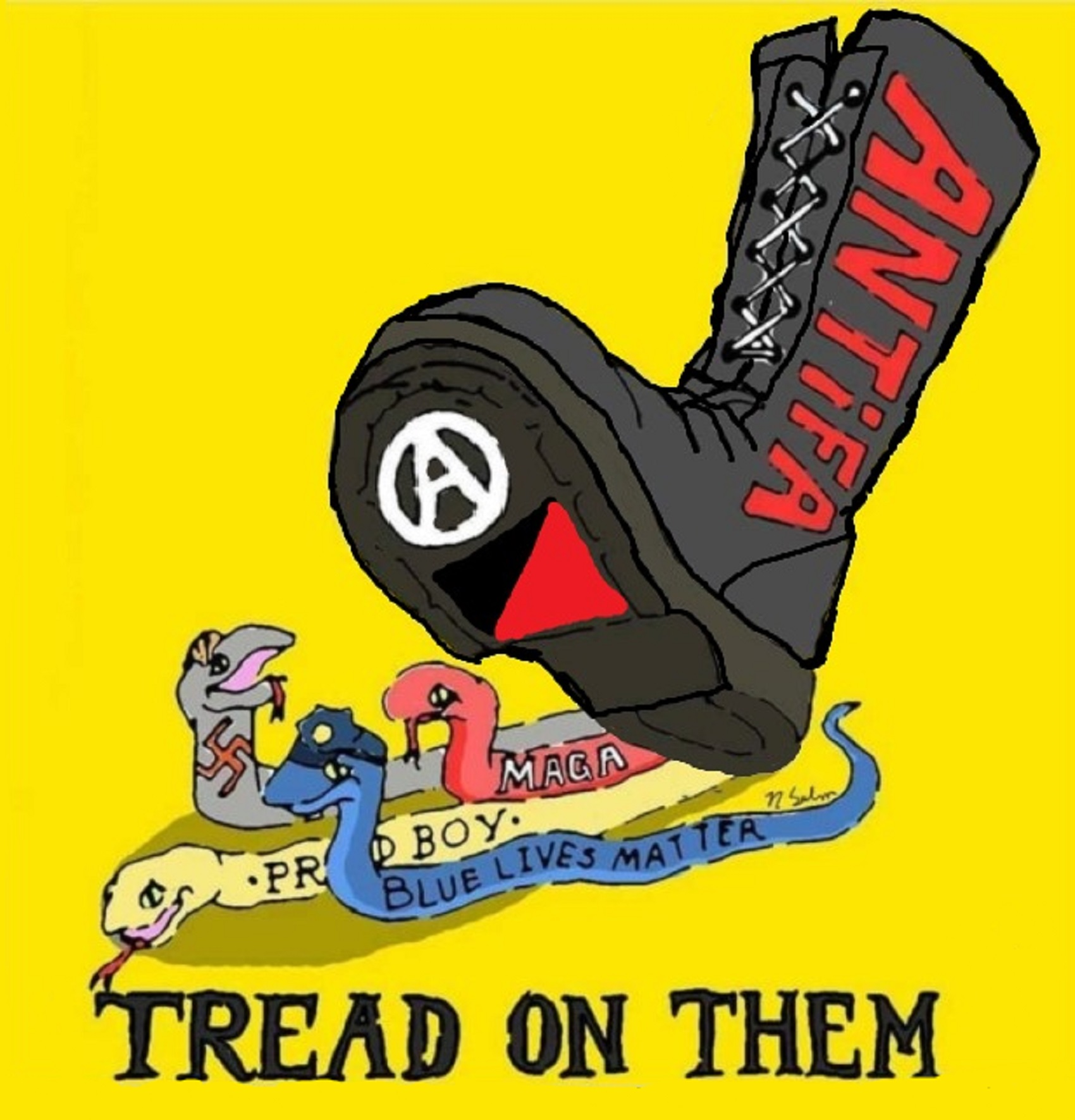

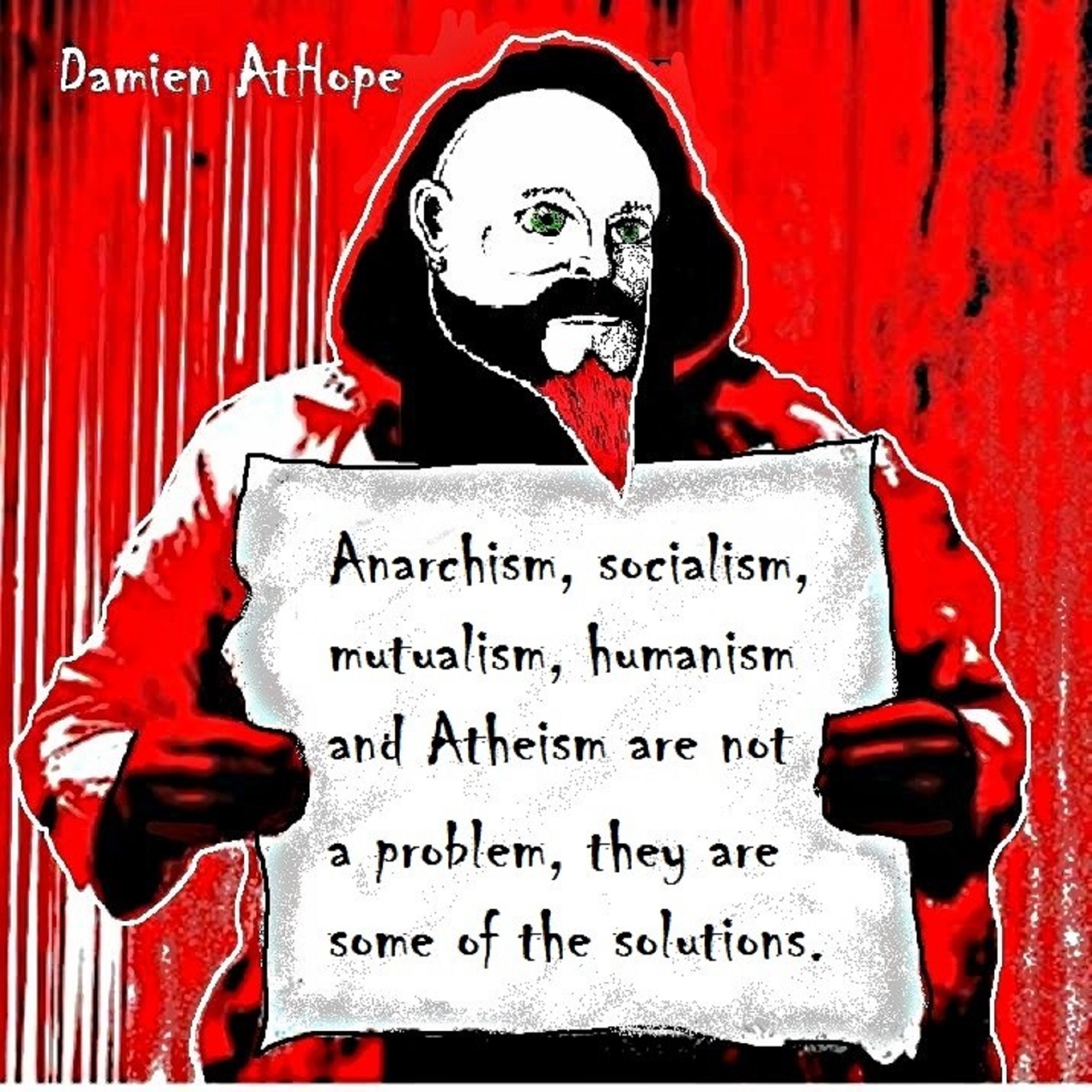



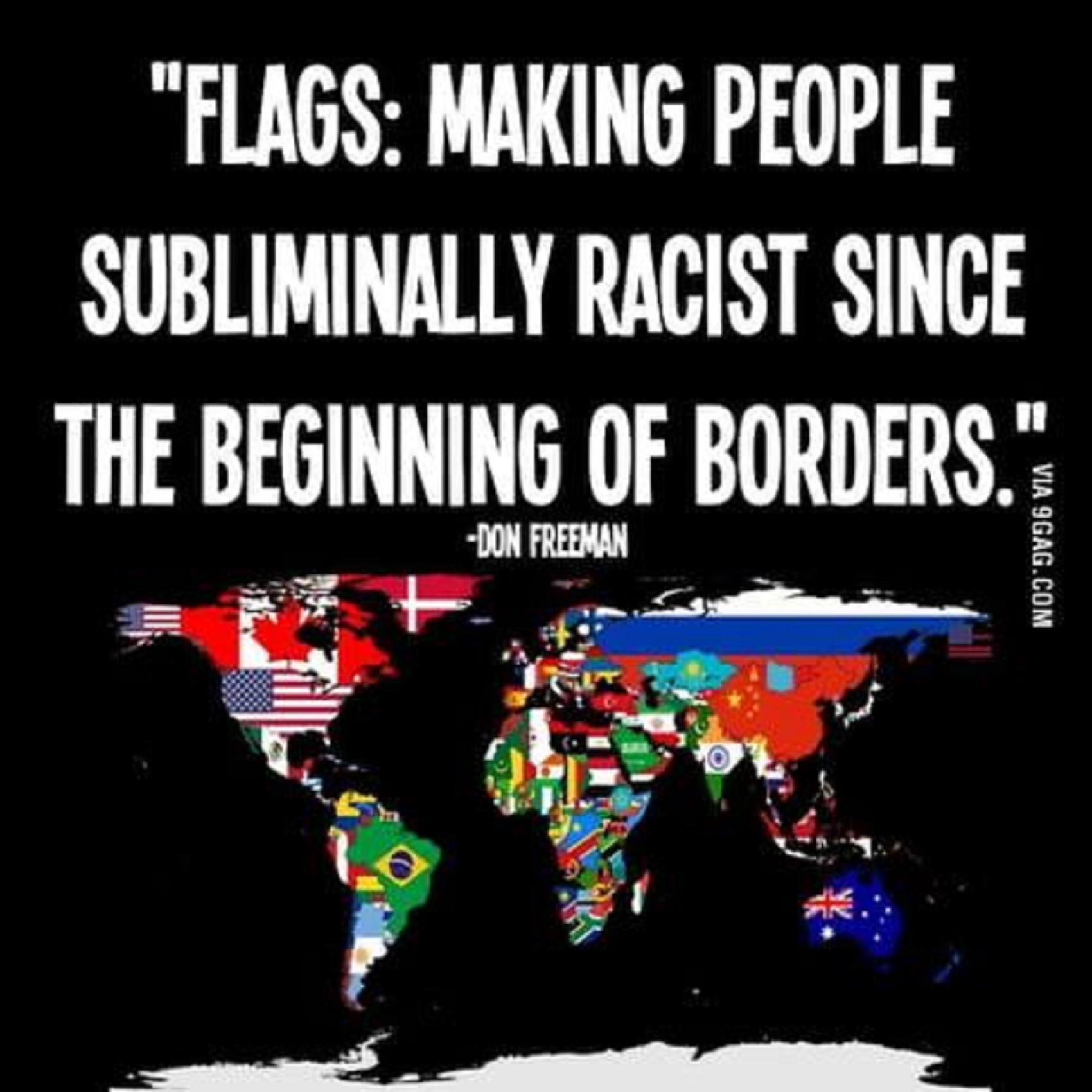


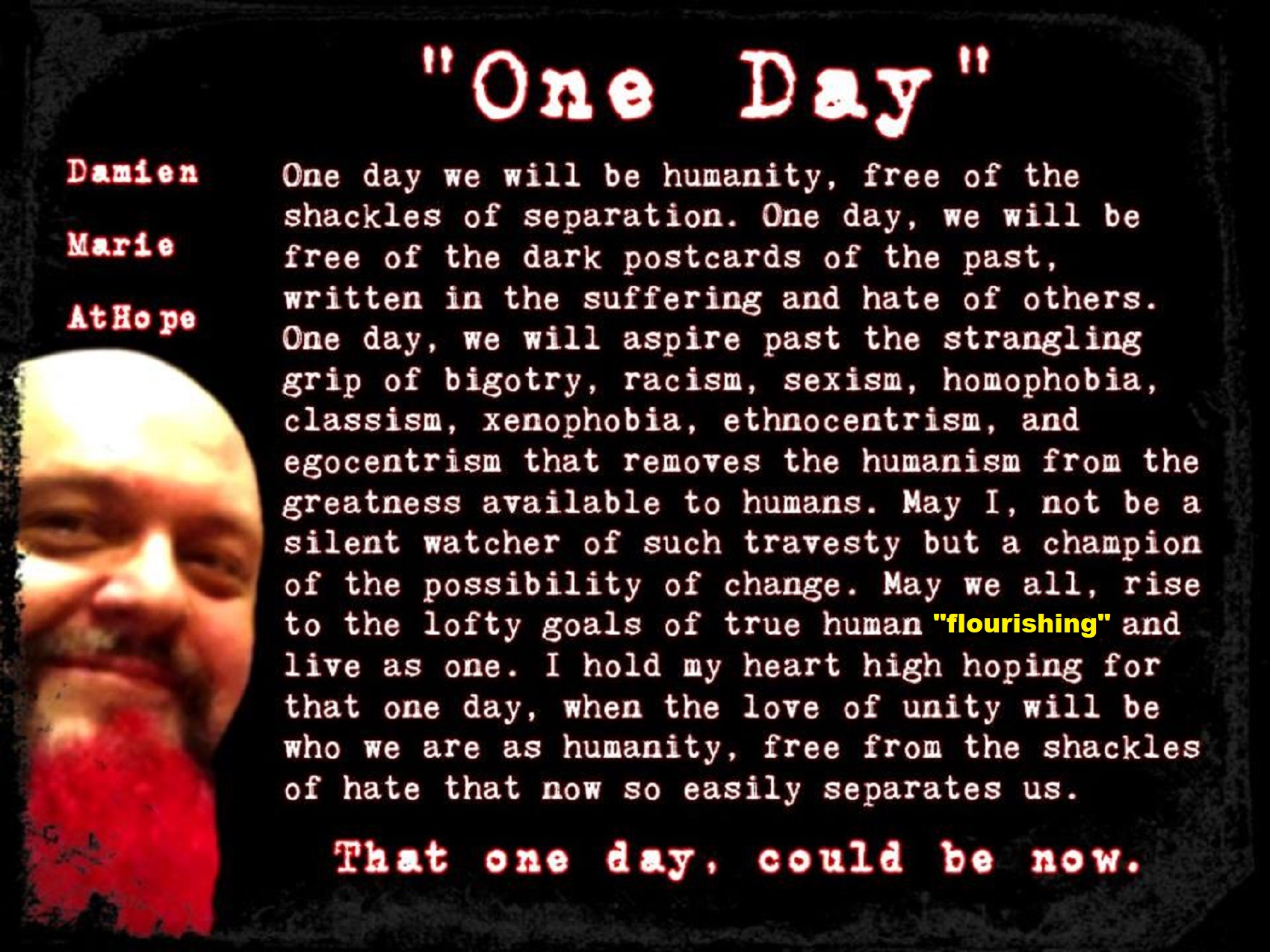
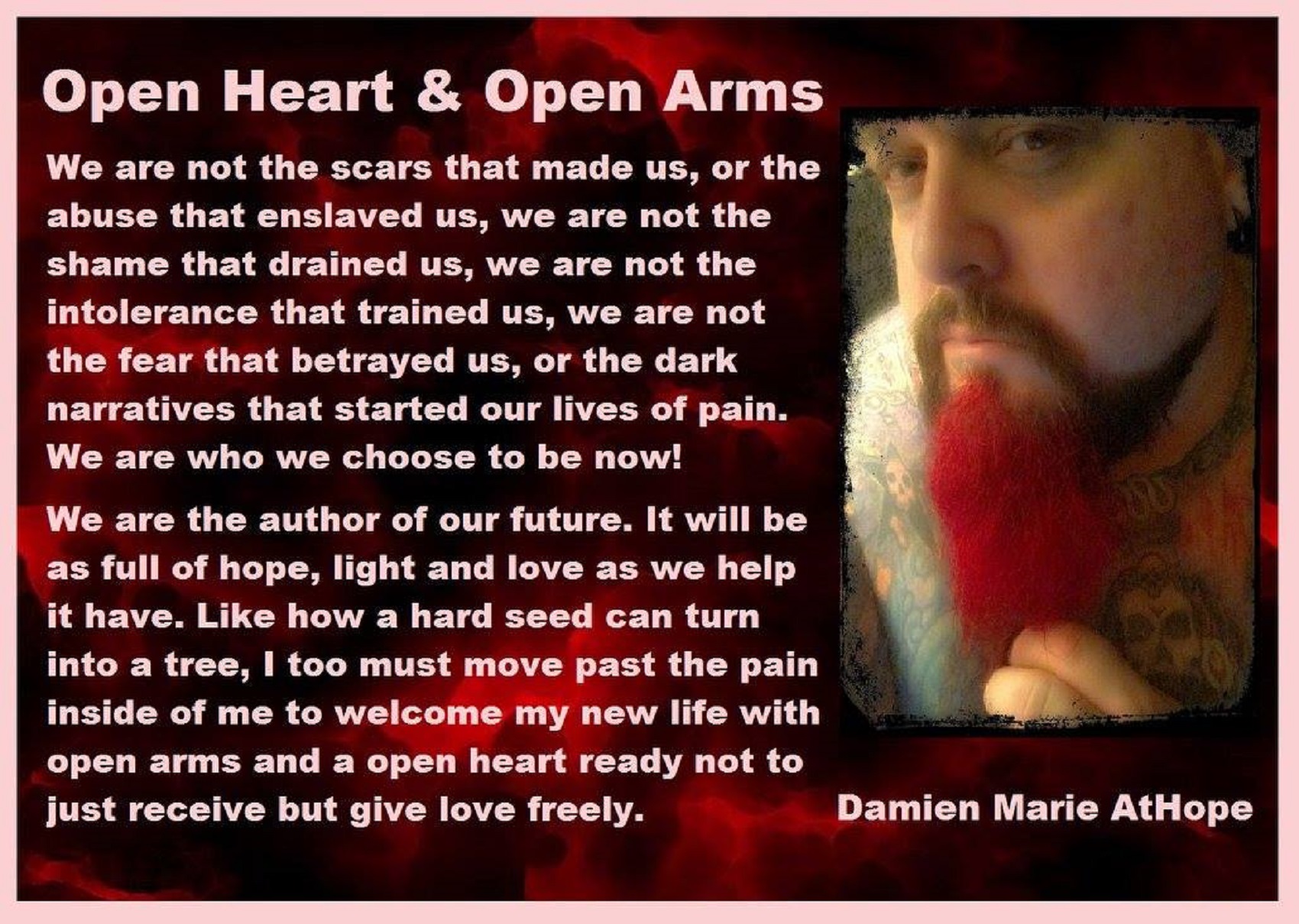
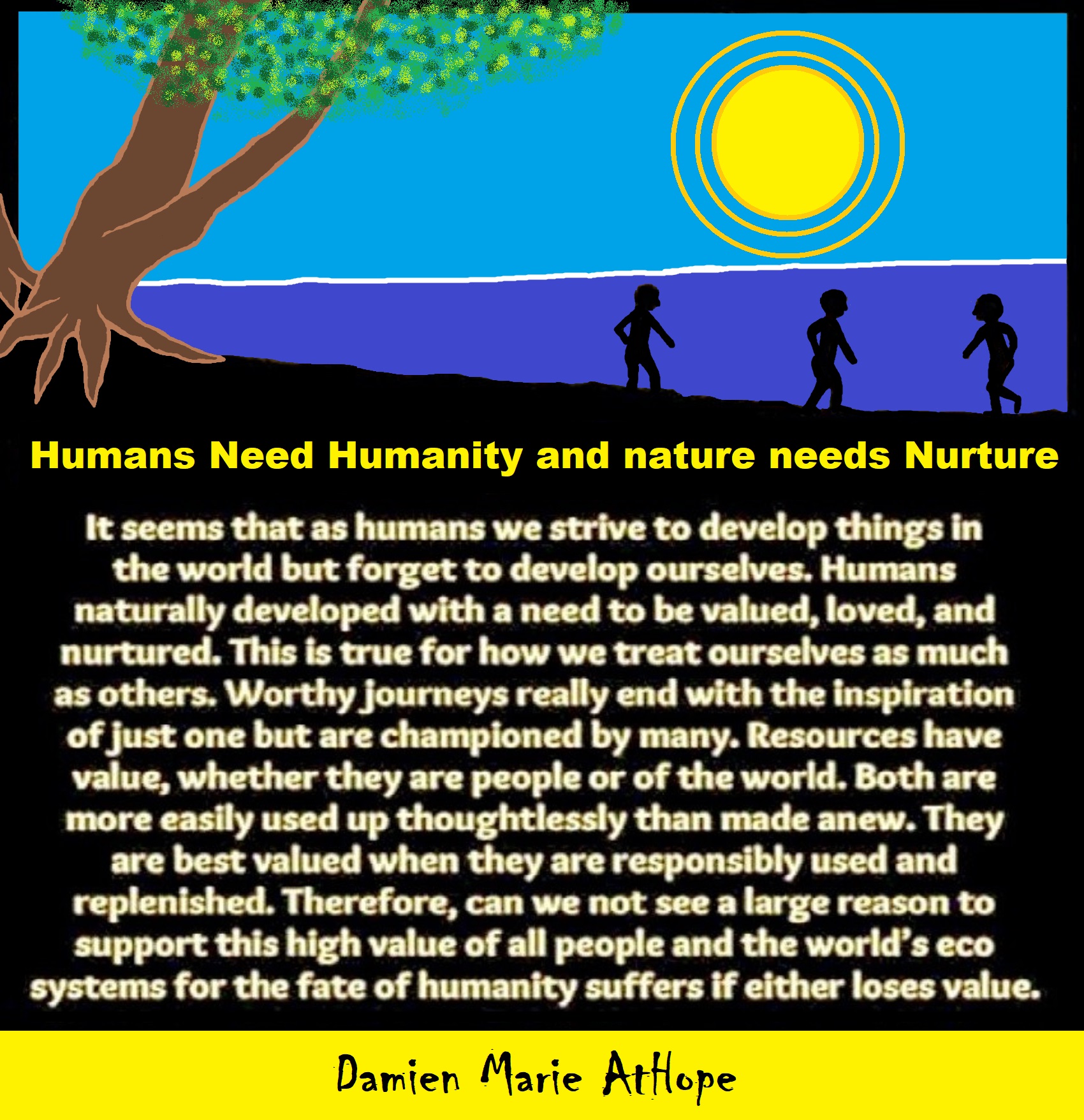
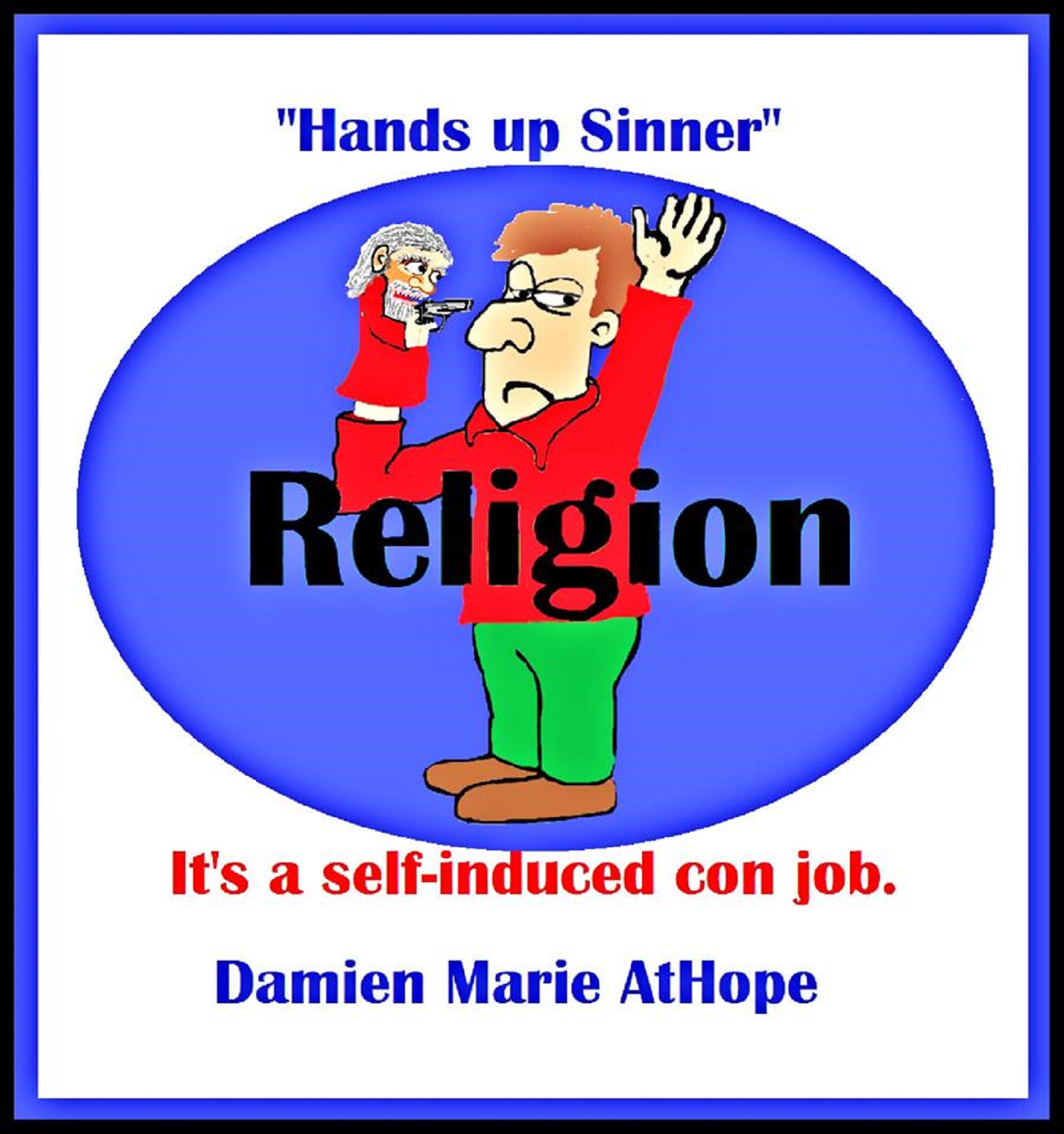
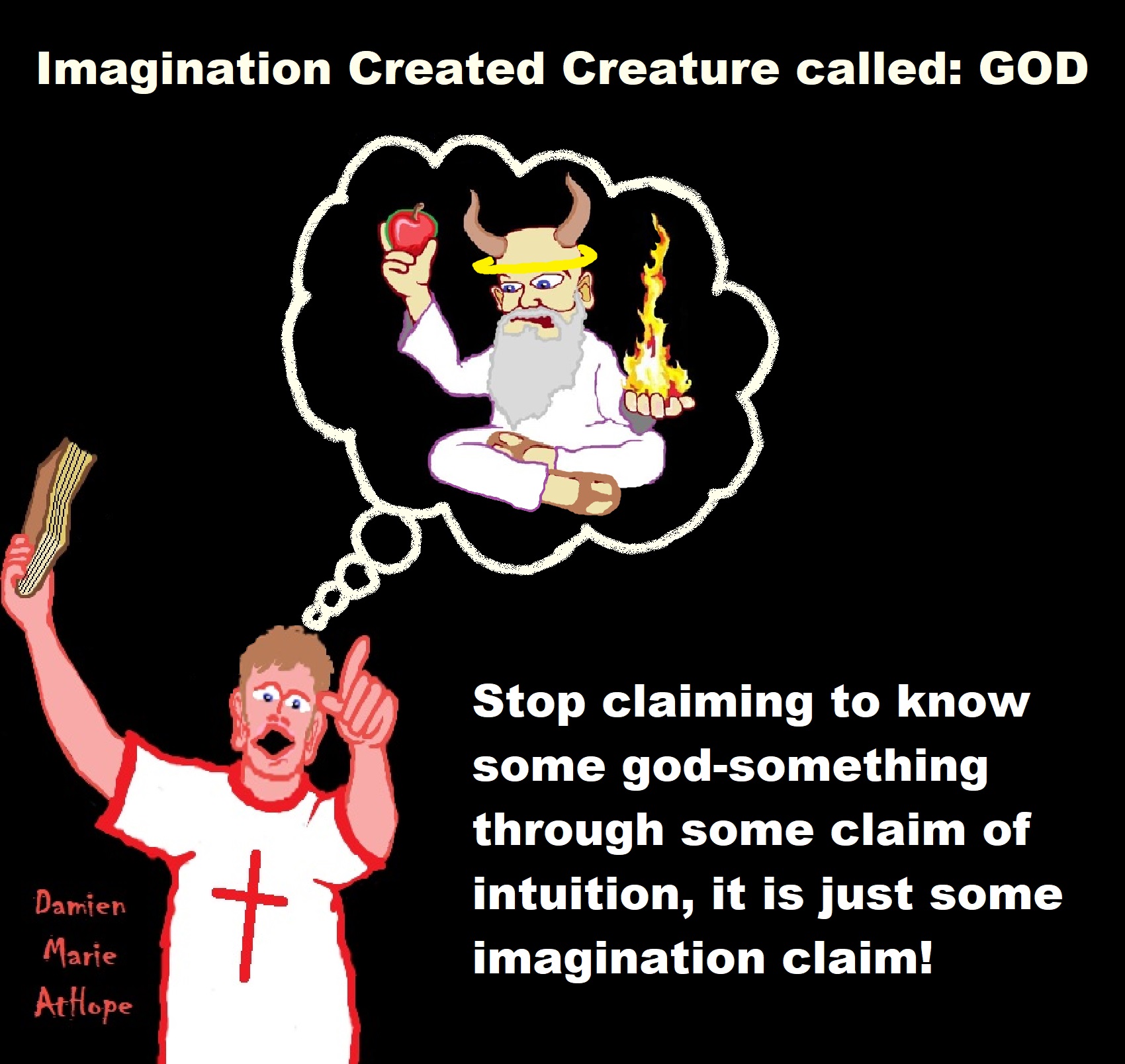
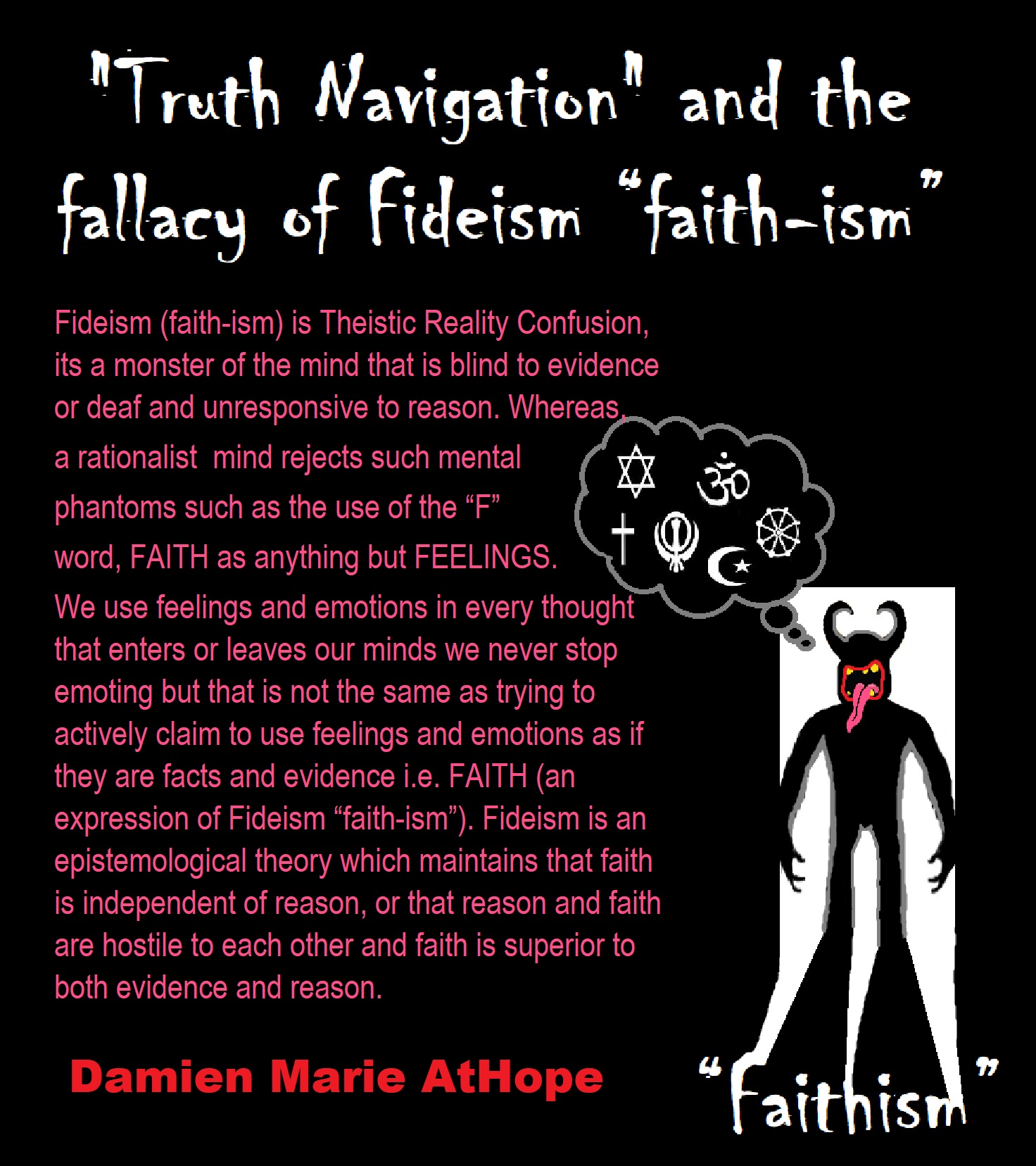

“Theists, there has to be a god, as something can not come from nothing.”
Well, thus something (unknown) happened and then there was something. This does not tell us what the something that may have been involved with something coming from nothing. A supposed first cause, thus something (unknown) happened and then there was something is not an open invitation to claim it as known, neither is it justified to call or label such an unknown as anything, especially an unsubstantiated magical thinking belief born of mythology and religious storytelling.


While hallucinogens are associated with shamanism, it is alcohol that is associated with paganism.
The Atheist-Humanist-Leftist Revolutionaries Shows in the prehistory series:
Show two: Pre-animism 300,000 years old and animism 100,000 years old: related to “Anarchism and Socialism”
Show tree: Totemism 50,000 years old: related to “Anarchism and Socialism”
Show four: Shamanism 30,000 years old: related to “Anarchism and Socialism”
Show five: Paganism 12,000 years old: related to “Anarchism and Socialism”
Show six: Emergence of hierarchy, sexism, slavery, and the new male god dominance: Paganism 7,000-5,000 years old: related to “Anarchism and Socialism” (Capitalism) (World War 0) Elite and their slaves!
Prehistory: related to “Anarchism and Socialism” the division of labor, power, rights, and recourses: VIDEO
Pre-animism 300,000 years old and animism 100,000 years old: related to “Anarchism and Socialism”: VIDEO
Totemism 50,000 years old: related to “Anarchism and Socialism”: VIDEO
Shamanism 30,000 years old: related to “Anarchism and Socialism”: VIDEO
Paganism 12,000 years old: related to “Anarchism and Socialism” (Pre-Capitalism): VIDEO
Paganism 7,000-5,000 years old: related to “Anarchism and Socialism” (Capitalism) (World War 0) Elite and their slaves: VIEDO
Paganism 5,000 years old: progressed organized religion and the state: related to “Anarchism and Socialism” (Kings and the Rise of the State): VIEDO
Paganism 4,000 years old: related to “Anarchism and Socialism” (First Moralistic gods, then the Origin time of Monotheism): VIEDO
I do not hate simply because I challenge and expose myths or lies any more than others being thought of as loving simply because of the protection and hiding from challenge their favored myths or lies.
The truth is best championed in the sunlight of challenge.
An archaeologist once said to me “Damien religion and culture are very different”
My response, So are you saying that was always that way, such as would you say Native Americans’ cultures are separate from their religions? And do you think it always was the way you believe?
I had said that religion was a cultural product. That is still how I see it and there are other archaeologists that think close to me as well. Gods too are the myths of cultures that did not understand science or the world around them, seeing magic/supernatural everywhere.
I personally think there is a goddess and not enough evidence to support a male god at Çatalhöyük but if there was both a male and female god and goddess then I know the kind of gods they were like Proto-Indo-European mythology.
This series idea was addressed in, Anarchist Teaching as Free Public Education or Free Education in the Public: VIDEO
Our 12 video series: Organized Oppression: Mesopotamian State Force and the Politics of power (9,000-4,000 years ago), is adapted from: The Complete and Concise History of the Sumerians and Early Bronze Age Mesopotamia (7000-2000 BC): https://www.youtube.com/watch?v=szFjxmY7jQA by “History with Cy“
Show #1: Mesopotamian State Force and the Politics of Power (Samarra, Halaf, Ubaid)
Show #2: Mesopotamian State Force and the Politics of Power
Show #3: Mesopotamian State Force and the Politics of Power (Uruk and the First Cities)
Show #4: Mesopotamian State Force and the Politics of Power (First Kings)
Show #5: Mesopotamian State Force and the Politics of Power (Early Dynastic Period)
Show #6: Mesopotamian State Force and the Politics of Power
Show #7: Mesopotamian State Force and the Politics of Power (Sargon and Akkadian Rule)
Show #9: Mesopotamian State Force and the Politics of Power (Gudea of Lagash and Utu-hegal)
Show #12: Mesopotamian State Force and the Politics of Power (Aftermath and Legacy of Sumer)

The “Atheist-Humanist-Leftist Revolutionaries”
Cory Johnston ☭ Ⓐ Atheist Leftist @Skepticallefty & I (Damien Marie AtHope) @AthopeMarie (my YouTube & related blog) are working jointly in atheist, antitheist, antireligionist, antifascist, anarchist, socialist, and humanist endeavors in our videos together, generally, every other Saturday.
Why Does Power Bring Responsibility?
Think, how often is it the powerless that start wars, oppress others, or commit genocide? So, I guess the question is to us all, to ask, how can power not carry responsibility in a humanity concept? I know I see the deep ethical responsibility that if there is power their must be a humanistic responsibility of ethical and empathic stewardship of that power. Will I be brave enough to be kind? Will I possess enough courage to be compassionate? Will my valor reach its height of empathy? I as everyone, earns our justified respect by our actions, that are good, ethical, just, protecting, and kind. Do I have enough self-respect to put my love for humanity’s flushing, over being brought down by some of its bad actors? May we all be the ones doing good actions in the world, to help human flourishing.
I create the world I want to live in, striving for flourishing. Which is not a place but a positive potential involvement and promotion; a life of humanist goal precision. To master oneself, also means mastering positive prosocial behaviors needed for human flourishing. I may have lost a god myth as an atheist, but I am happy to tell you, my friend, it is exactly because of that, leaving the mental terrorizer, god belief, that I truly regained my connected ethical as well as kind humanity.
Cory and I will talk about prehistory and theism, addressing the relevance to atheism, anarchism, and socialism.
At the same time as the rise of the male god, 7,000 years ago, there was also the very time there was the rise of violence, war, and clans to kingdoms, then empires, then states. It is all connected back to 7,000 years ago, and it moved across the world.
Cory Johnston: https://damienmarieathope.com/2021/04/cory-johnston-mind-of-a-skeptical-leftist/?v=32aec8db952d
The Mind of a Skeptical Leftist (YouTube)
Cory Johnston: Mind of a Skeptical Leftist @Skepticallefty
The Mind of a Skeptical Leftist By Cory Johnston: “Promoting critical thinking, social justice, and left-wing politics by covering current events and talking to a variety of people. Cory Johnston has been thoughtfully talking to people and attempting to promote critical thinking, social justice, and left-wing politics.” http://anchor.fm/skepticalleft
Cory needs our support. We rise by helping each other.
Cory Johnston ☭ Ⓐ @Skepticallefty Evidence-based atheist leftist (he/him) Producer, host, and co-host of 4 podcasts @skeptarchy @skpoliticspod and @AthopeMarie
Damien Marie AtHope (“At Hope”) Axiological Atheist, Anti-theist, Anti-religionist, Secular Humanist. Rationalist, Writer, Artist, Poet, Philosopher, Advocate, Activist, Psychology, and Armchair Archaeology/Anthropology/Historian.
Damien is interested in: Freedom, Liberty, Justice, Equality, Ethics, Humanism, Science, Atheism, Antiteism, Antireligionism, Ignosticism, Left-Libertarianism, Anarchism, Socialism, Mutualism, Axiology, Metaphysics, LGBTQI, Philosophy, Advocacy, Activism, Mental Health, Psychology, Archaeology, Social Work, Sexual Rights, Marriage Rights, Woman’s Rights, Gender Rights, Child Rights, Secular Rights, Race Equality, Ageism/Disability Equality, Etc. And a far-leftist, “Anarcho-Humanist.”
I am not a good fit in the atheist movement that is mostly pro-capitalist, I am anti-capitalist. Mostly pro-skeptic, I am a rationalist not valuing skepticism. Mostly pro-agnostic, I am anti-agnostic. Mostly limited to anti-Abrahamic religions, I am an anti-religionist.
To me, the “male god” seems to have either emerged or become prominent around 7,000 years ago, whereas the now favored monotheism “male god” is more like 4,000 years ago or so. To me, the “female goddess” seems to have either emerged or become prominent around 11,000-10,000 years ago or so, losing the majority of its once prominence around 2,000 years ago due largely to the now favored monotheism “male god” that grow in prominence after 4,000 years ago or so.
My Thought on the Evolution of Gods?
Animal protector deities from old totems/spirit animal beliefs come first to me, 13,000/12,000 years ago, then women as deities 11,000/10,000 years ago, then male gods around 7,000/8,000 years ago. Moralistic gods around 5,000/4,000 years ago, and monotheistic gods around 4,000/3,000 years ago.
To me, animal gods were likely first related to totemism animals around 13,000 to 12,000 years ago or older. Female as goddesses was next to me, 11,000 to 10,000 years ago or so with the emergence of agriculture. Then male gods come about 8,000 to 7,000 years ago with clan wars. Many monotheism-themed religions started in henotheism, emerging out of polytheism/paganism.


Damien Marie AtHope (Said as “At” “Hope”)/(Autodidact Polymath but not good at math):
Axiological Atheist, Anti-theist, Anti-religionist, Secular Humanist, Rationalist, Writer, Artist, Jeweler, Poet, “autodidact” Philosopher, schooled in Psychology, and “autodidact” Armchair Archaeology/Anthropology/Pre-Historian (Knowledgeable in the range of: 1 million to 5,000/4,000 years ago). I am an anarchist socialist politically. Reasons for or Types of Atheism
My Website, My Blog, & Short-writing or Quotes, My YouTube, Twitter: @AthopeMarie, and My Email: damien.marie.athope@gmail.com

